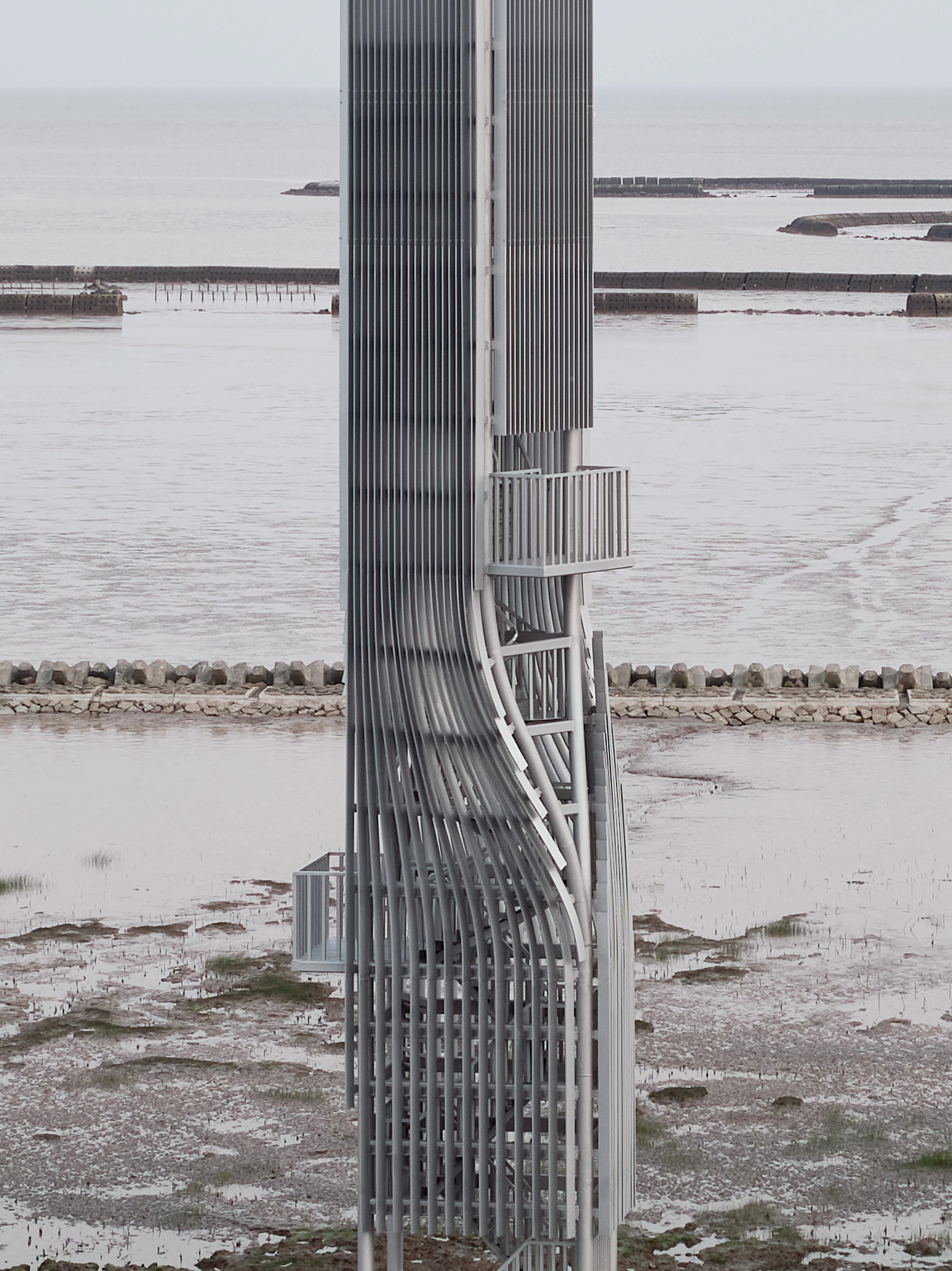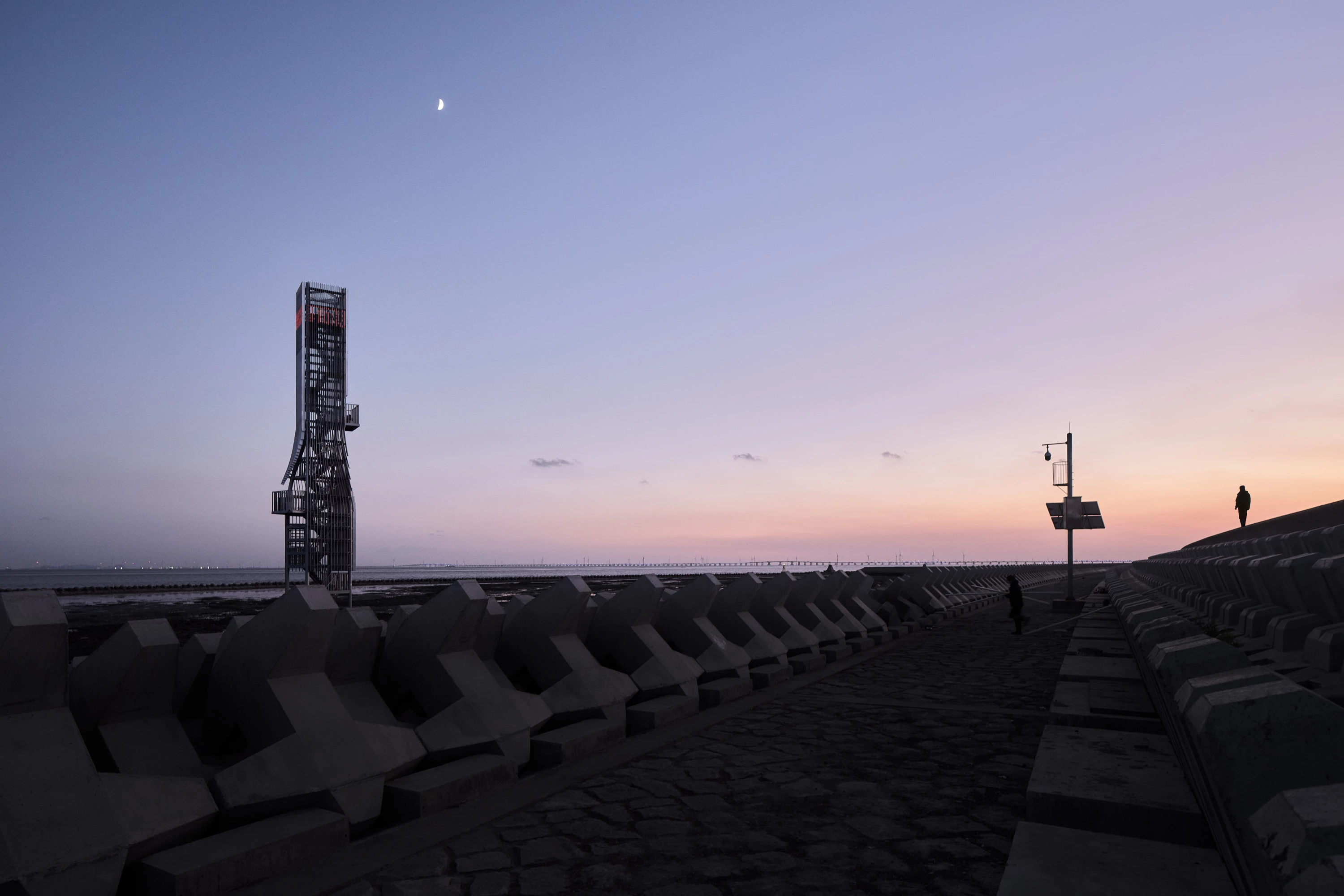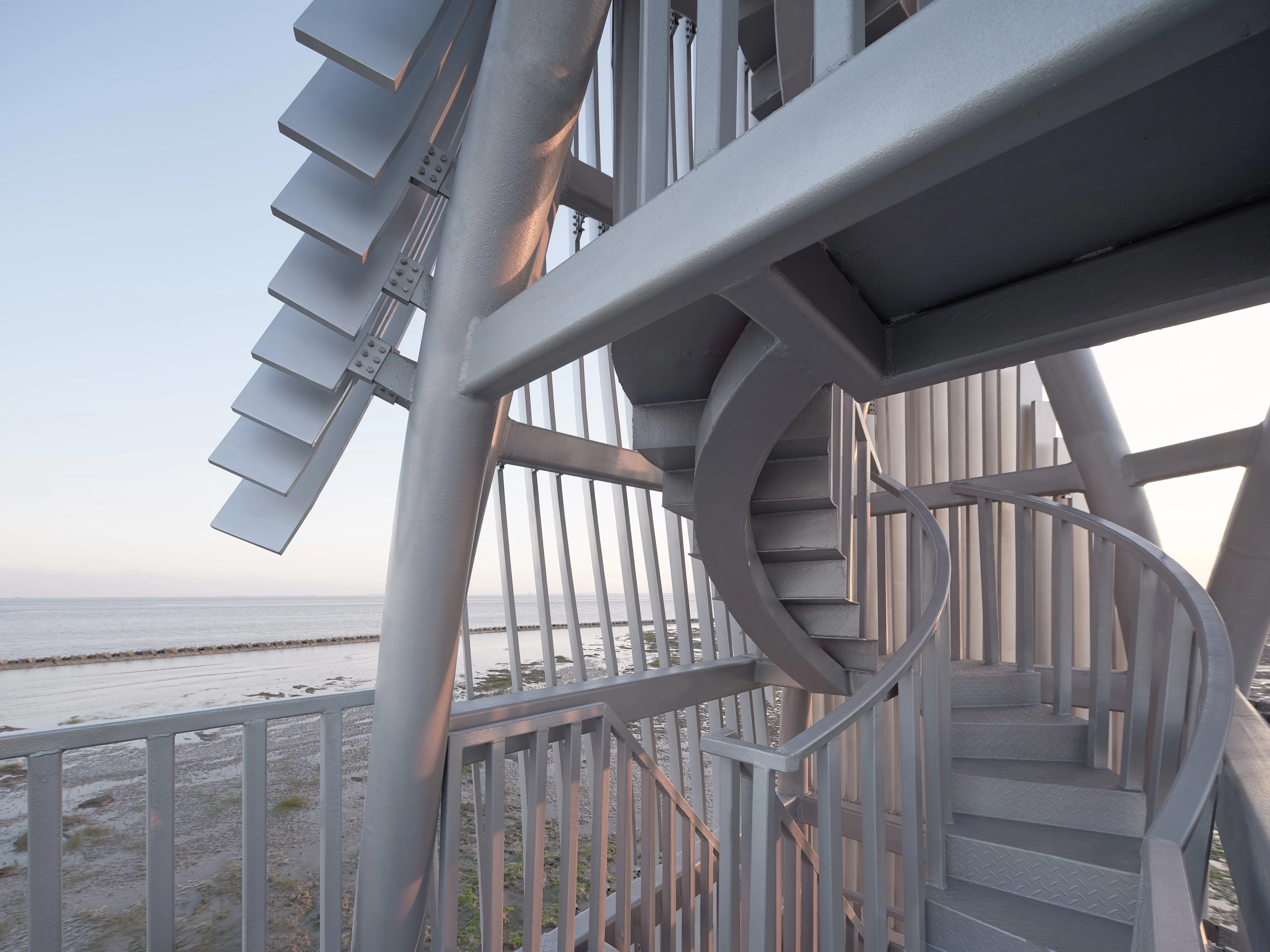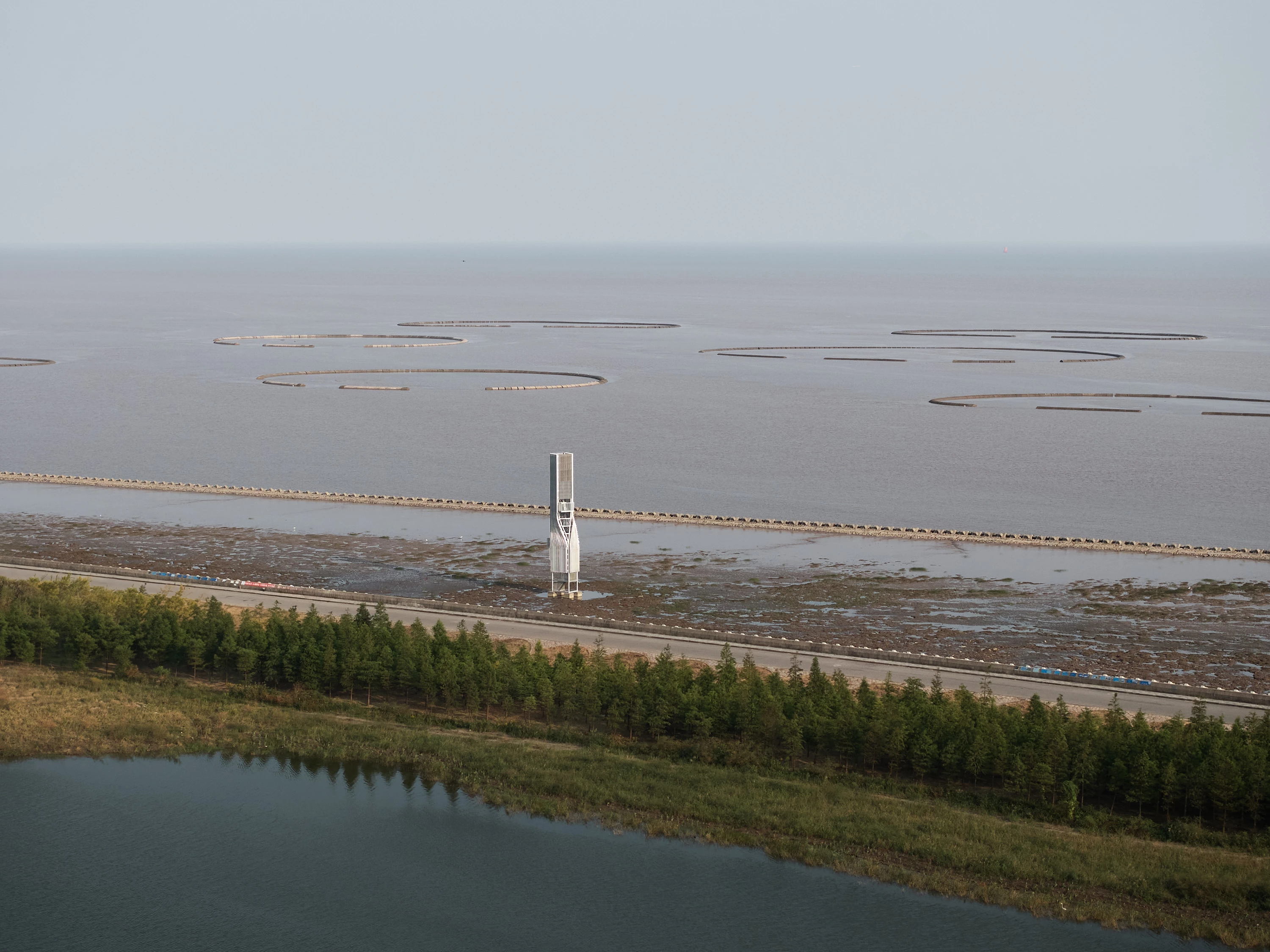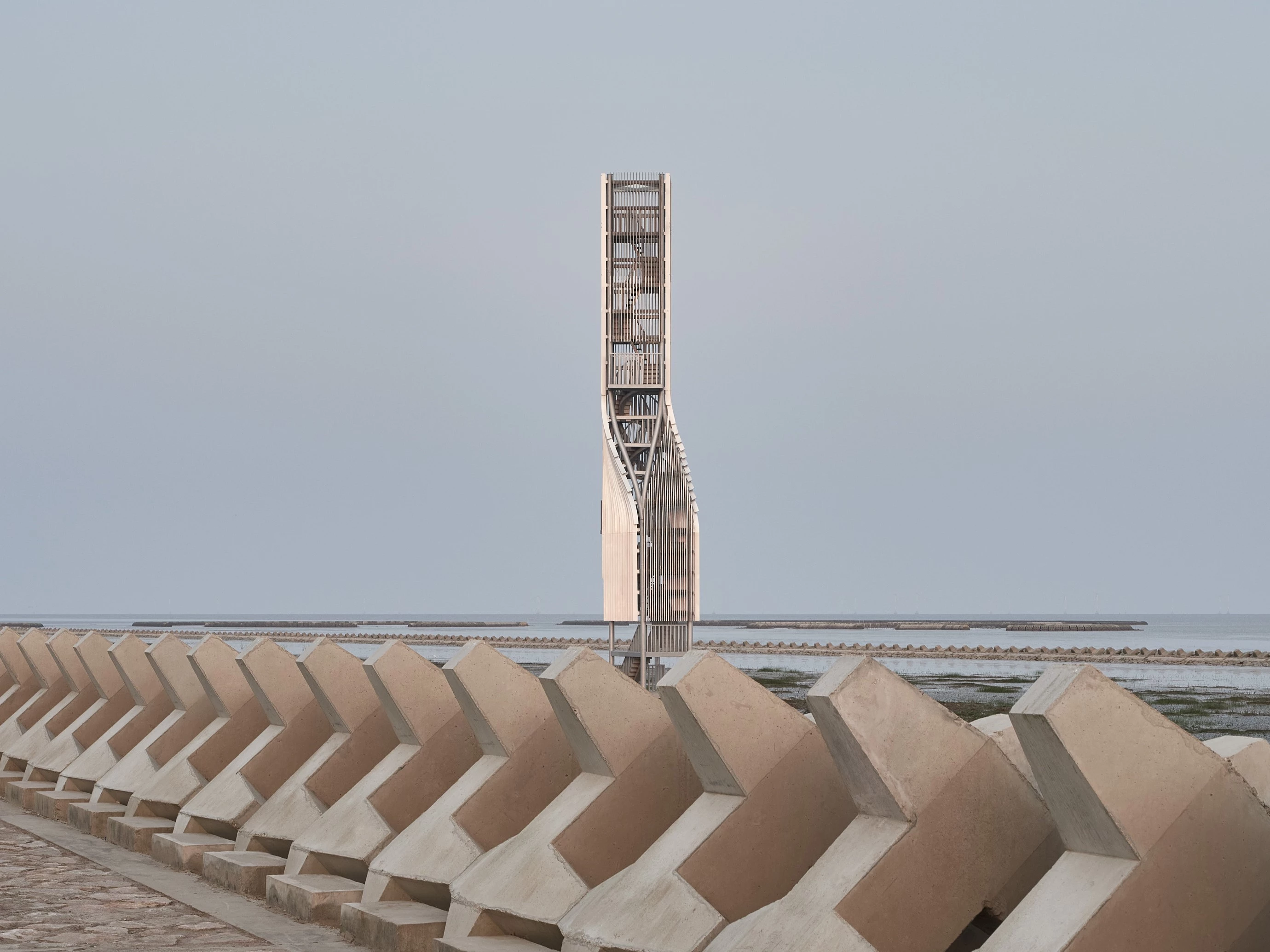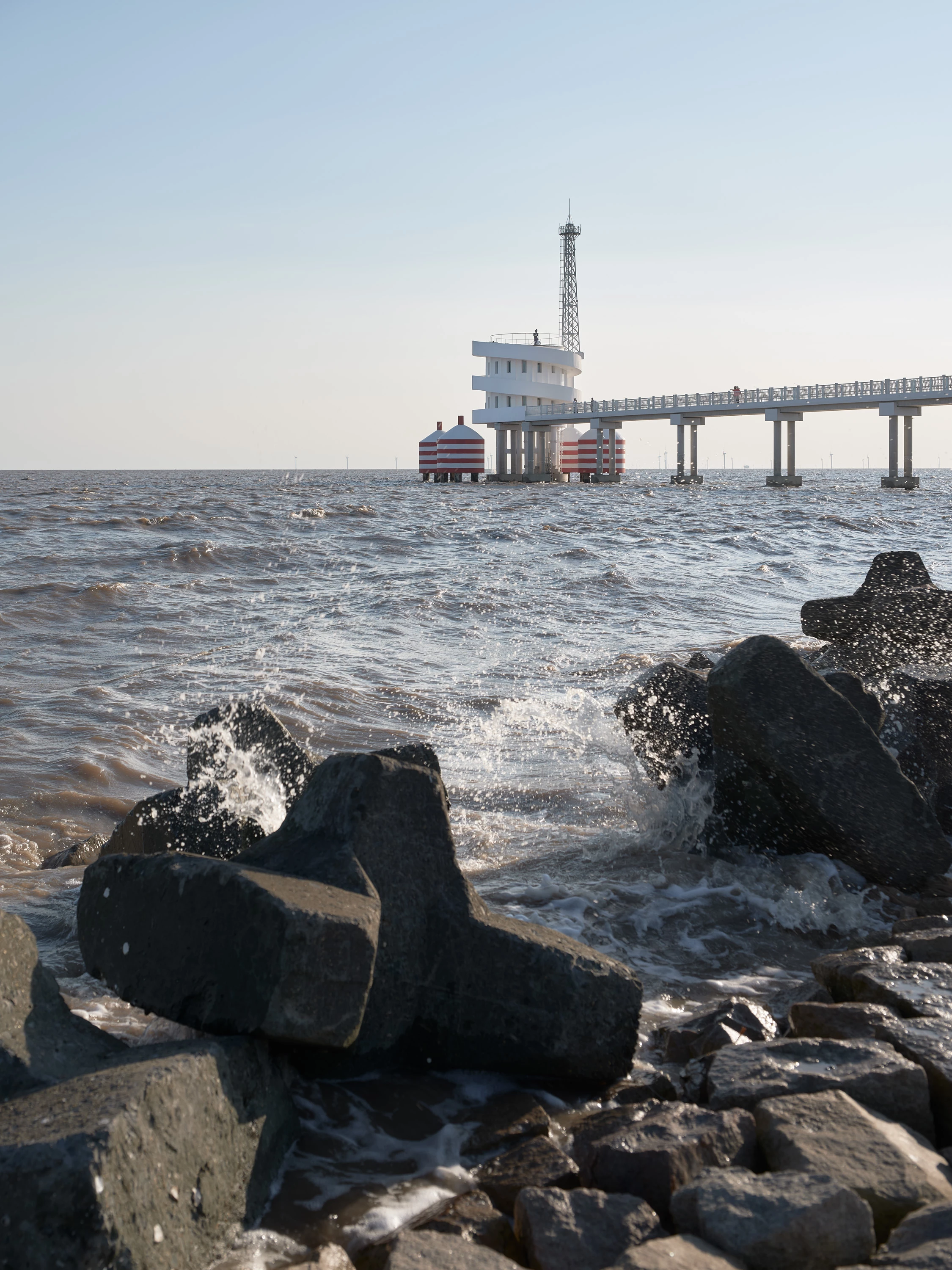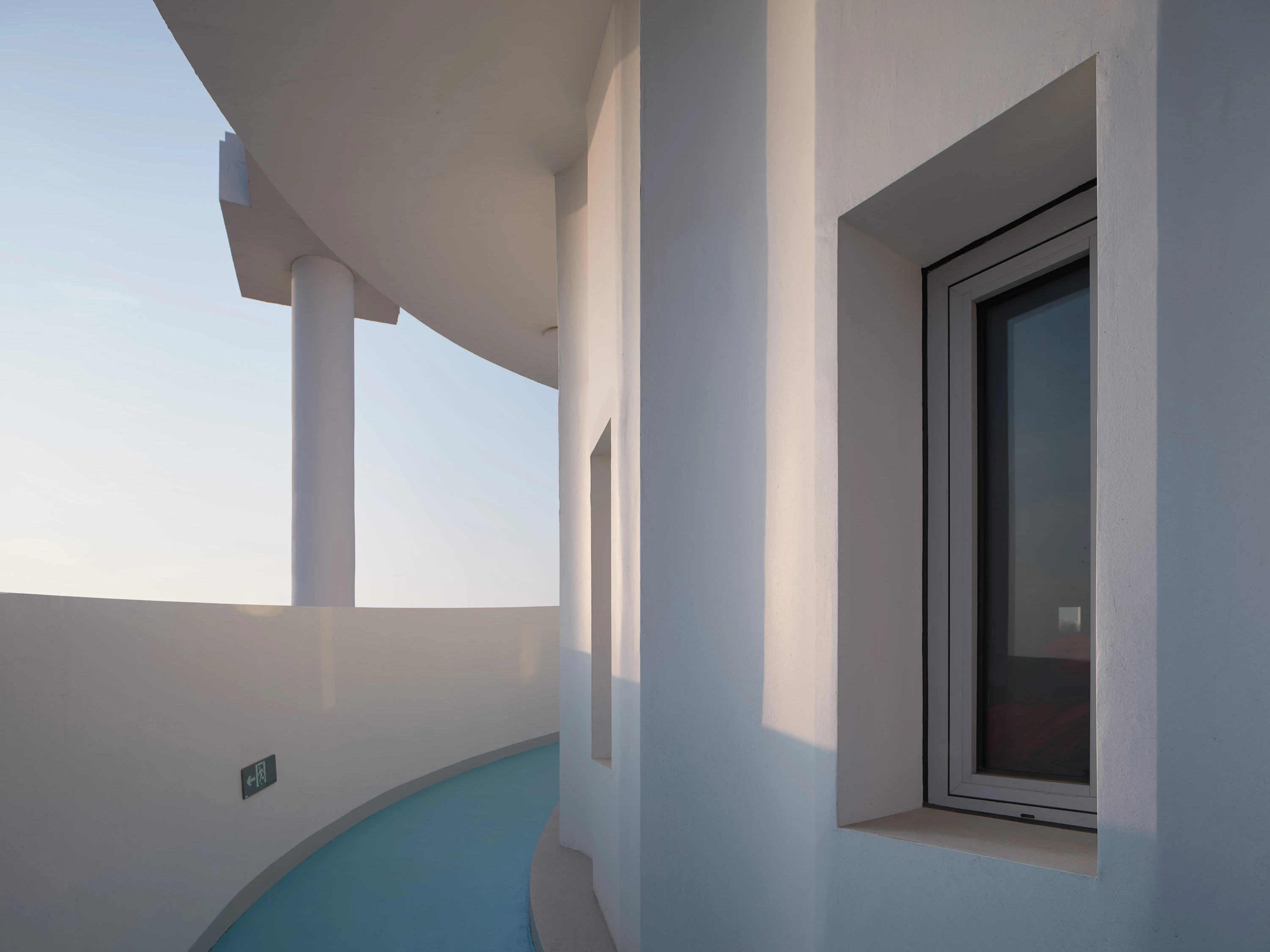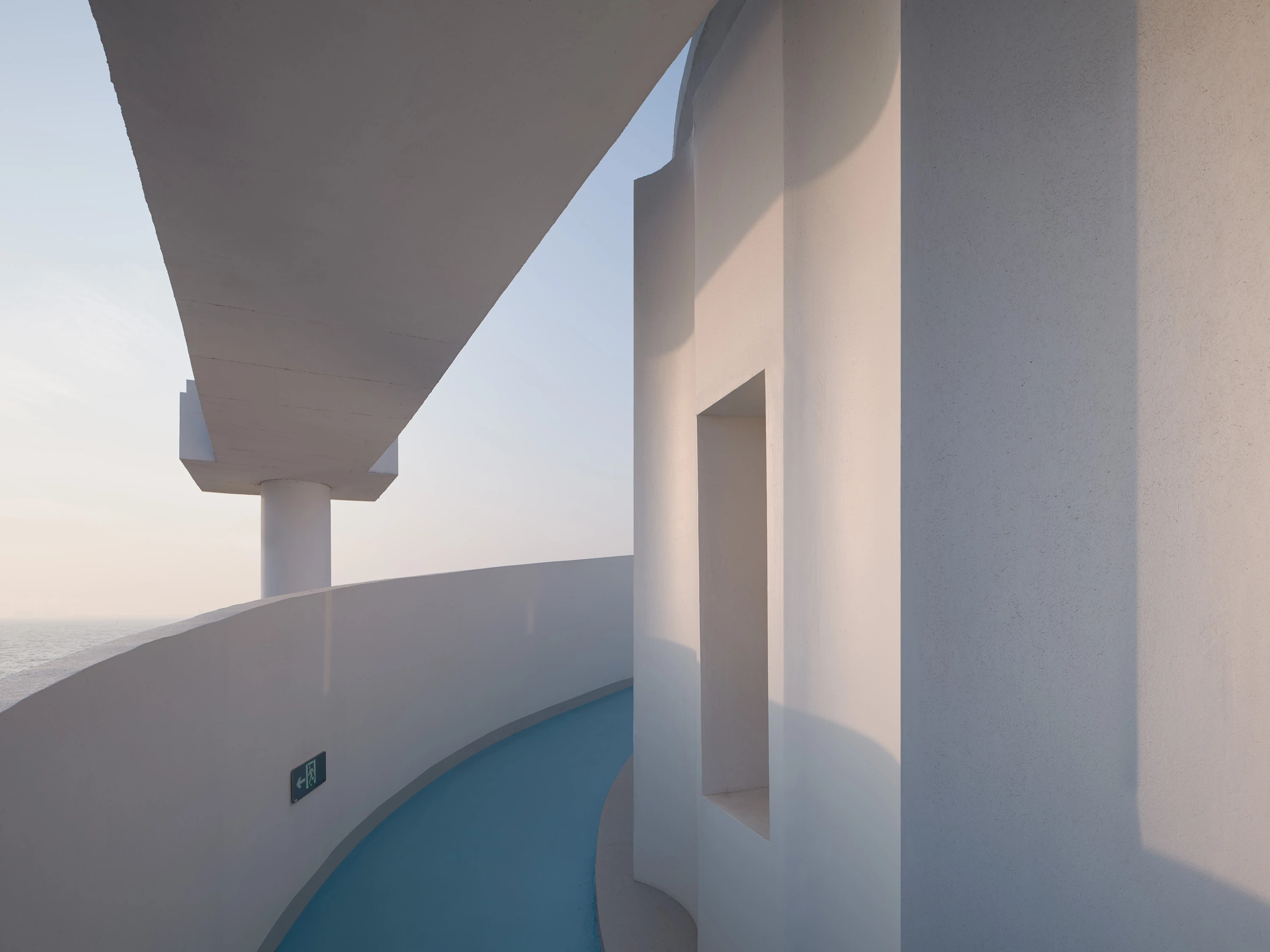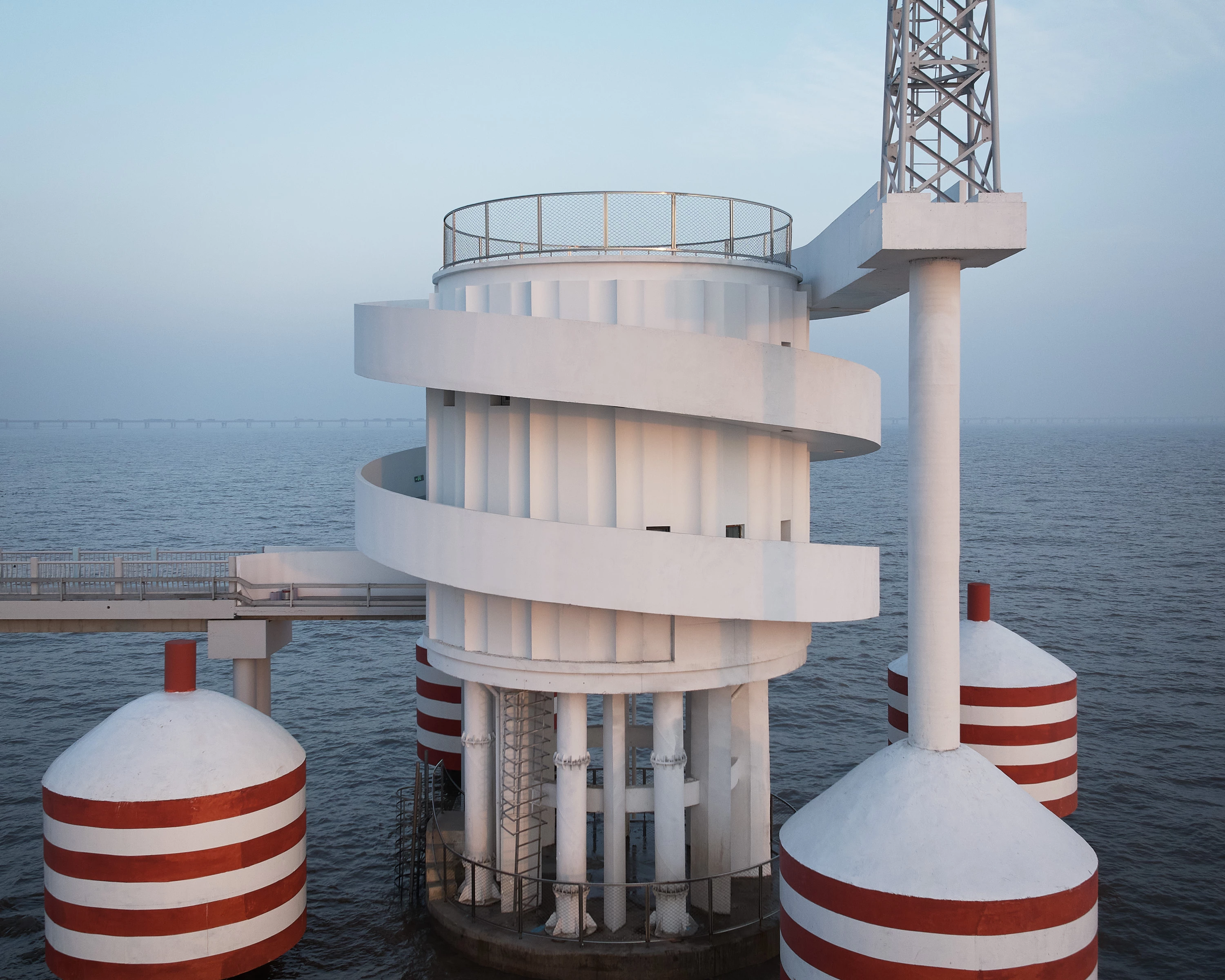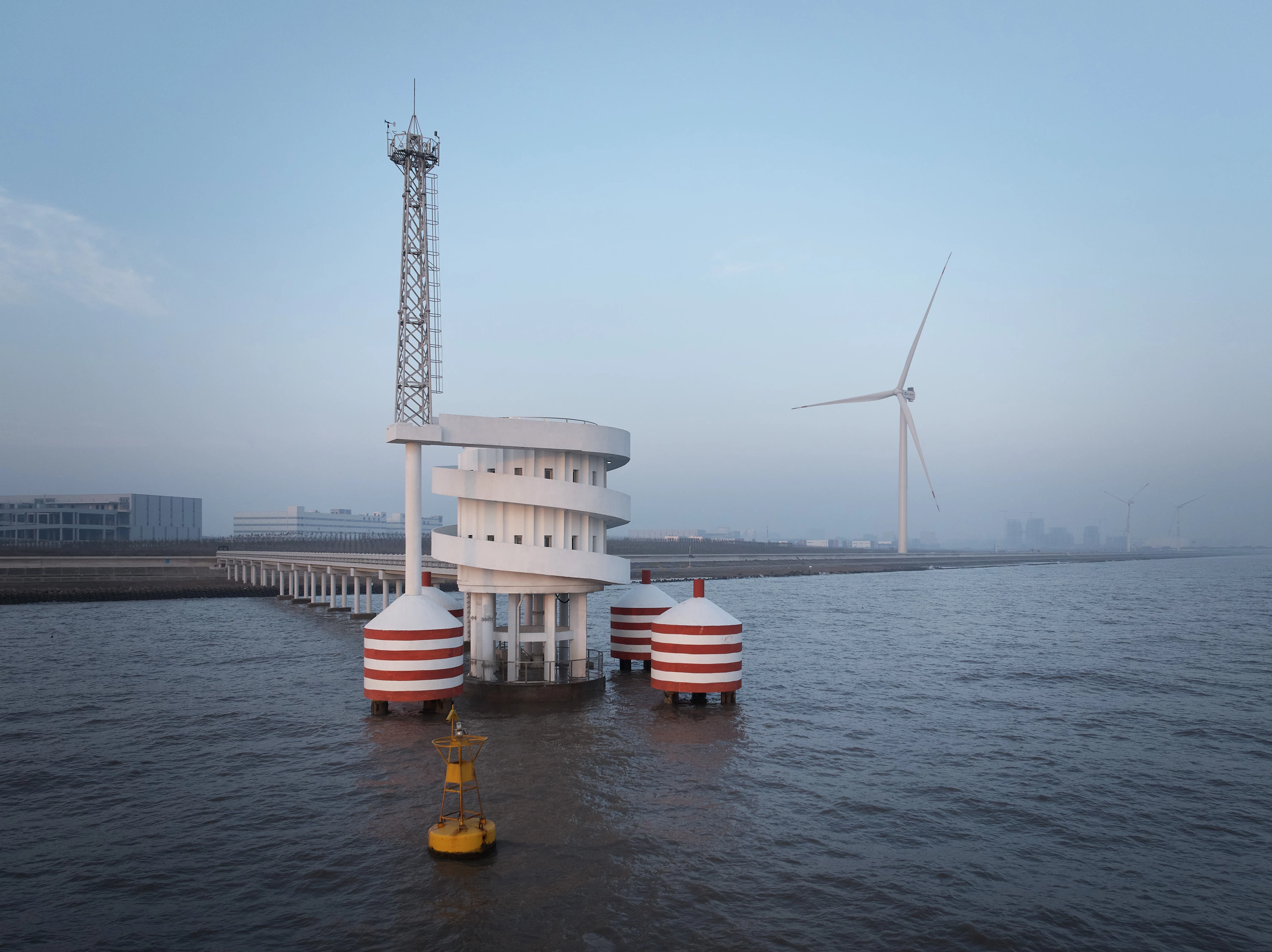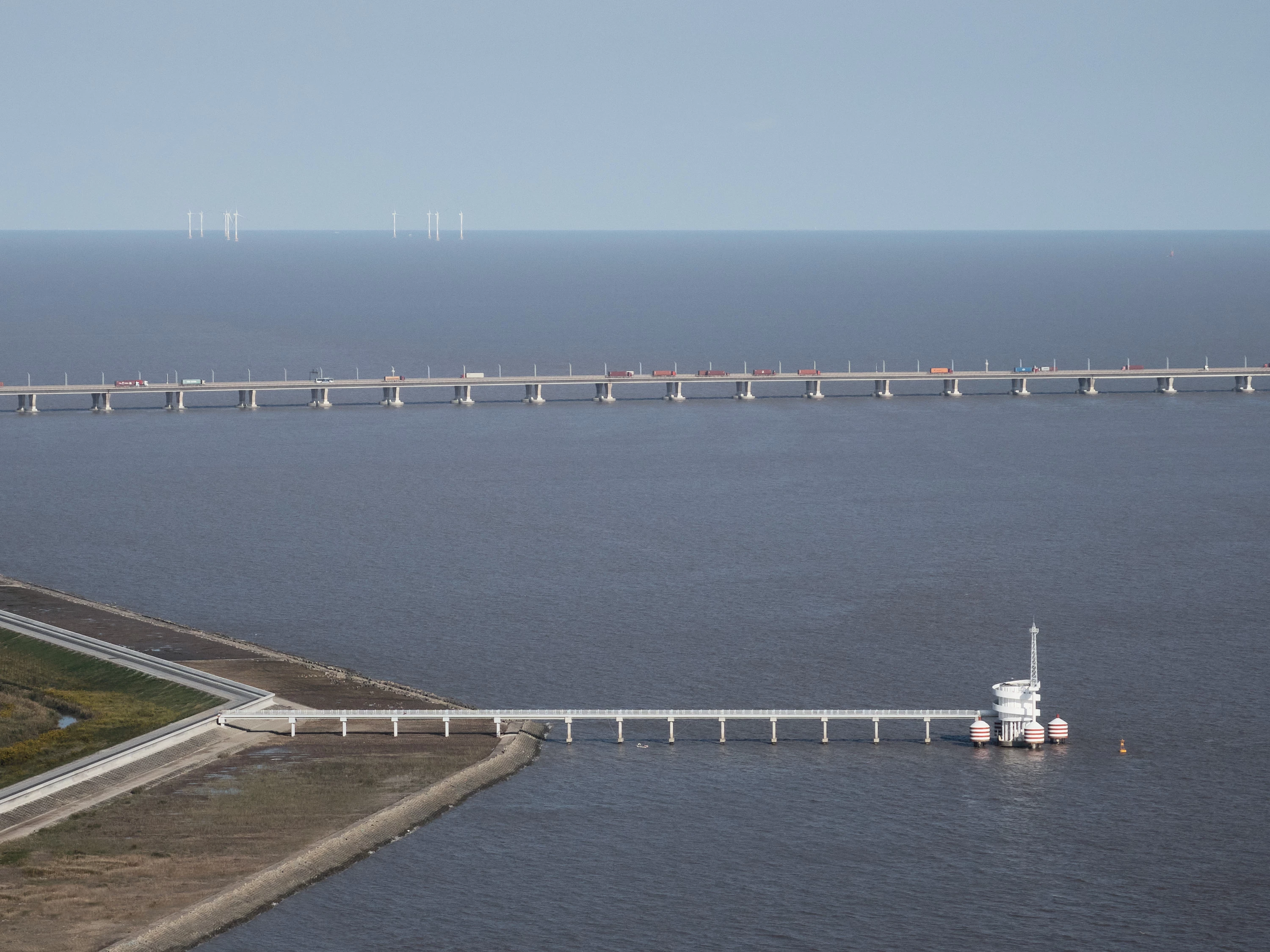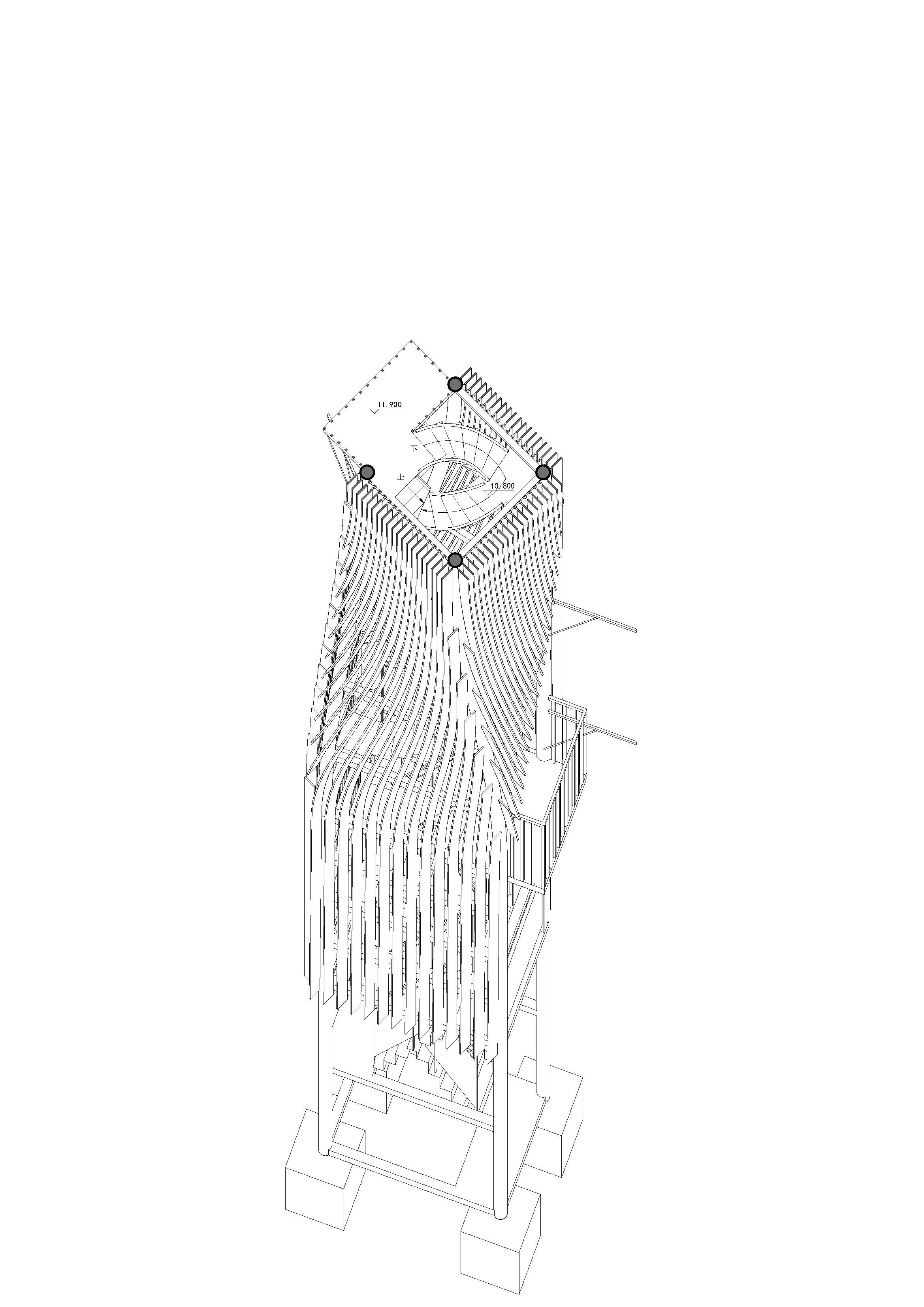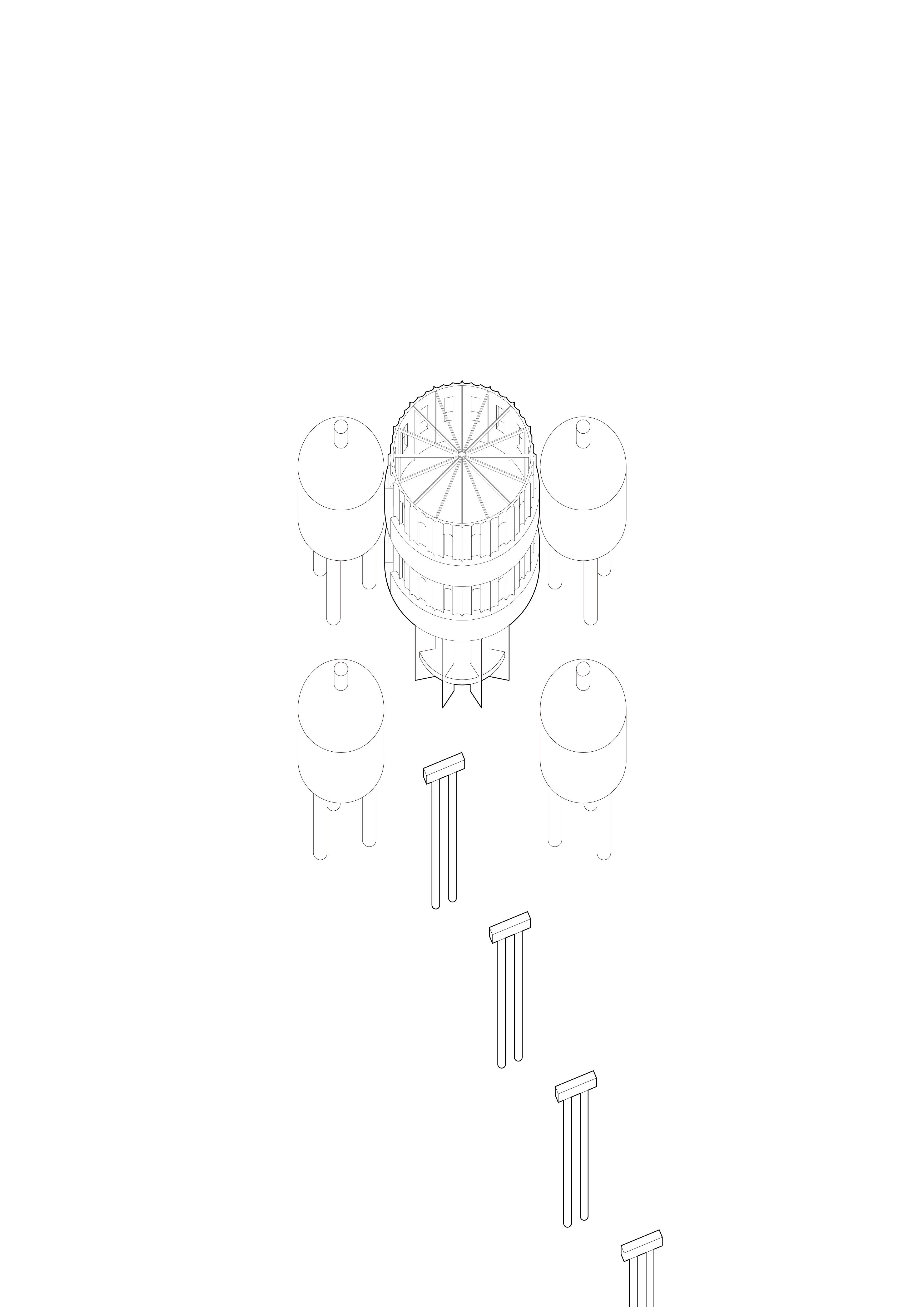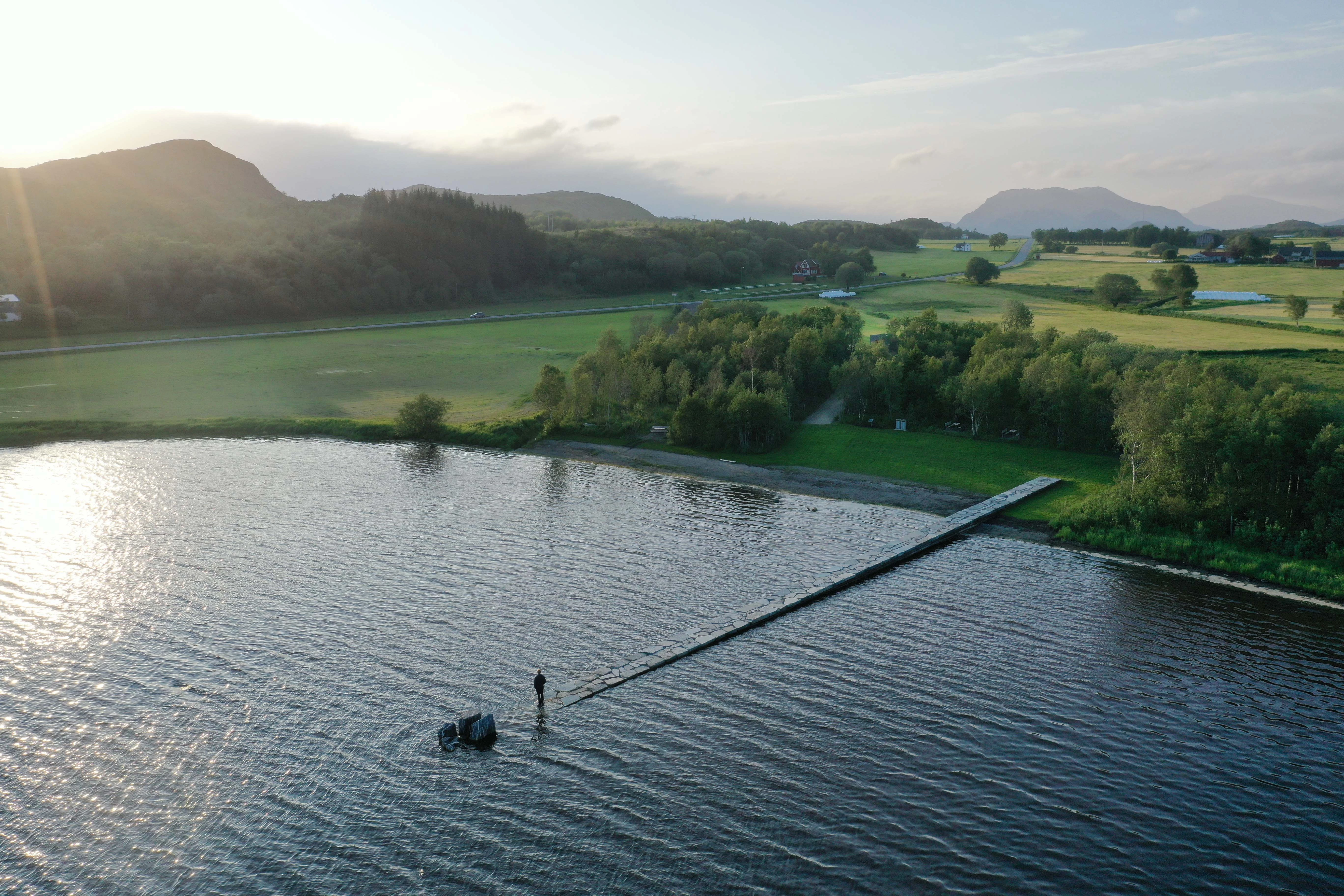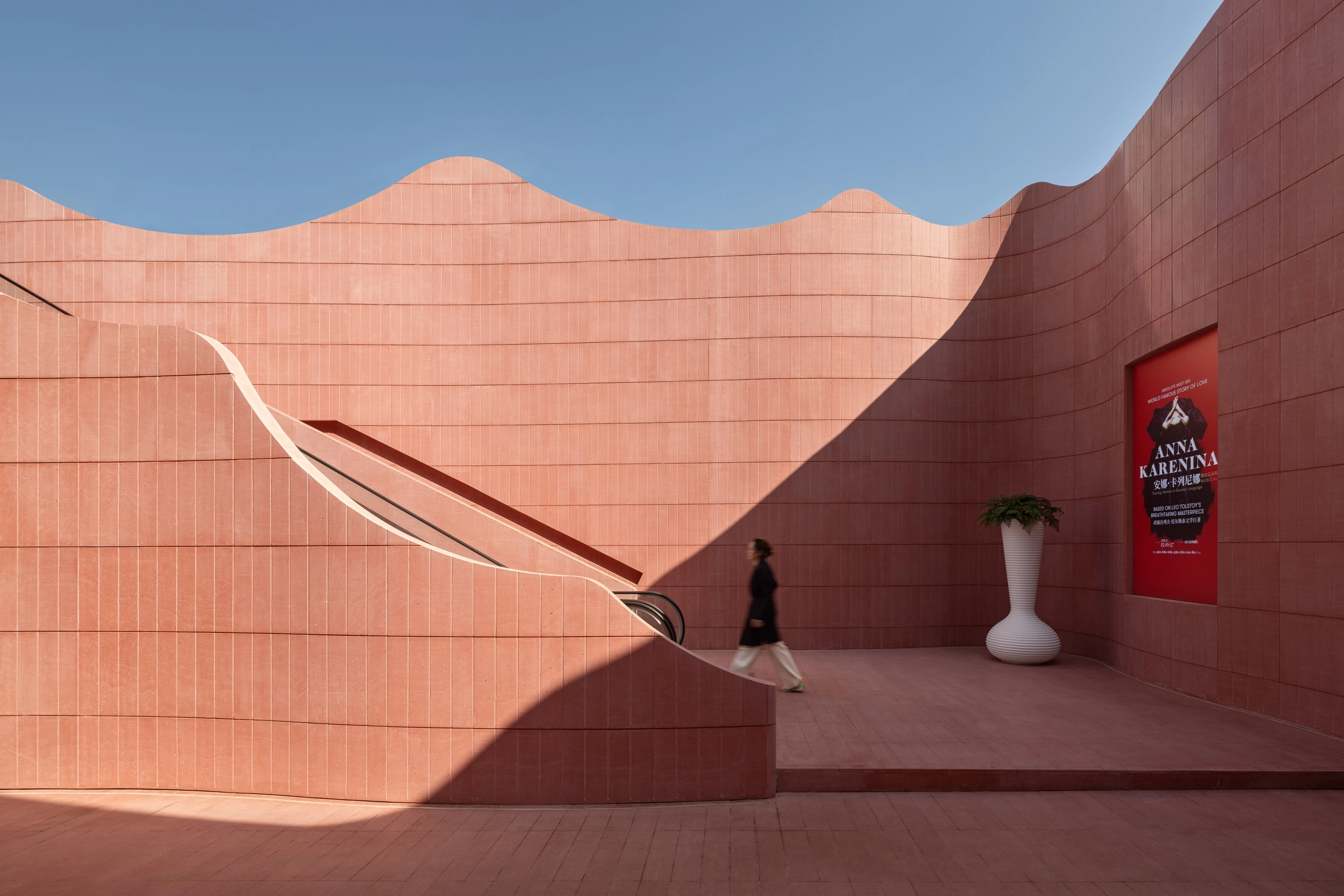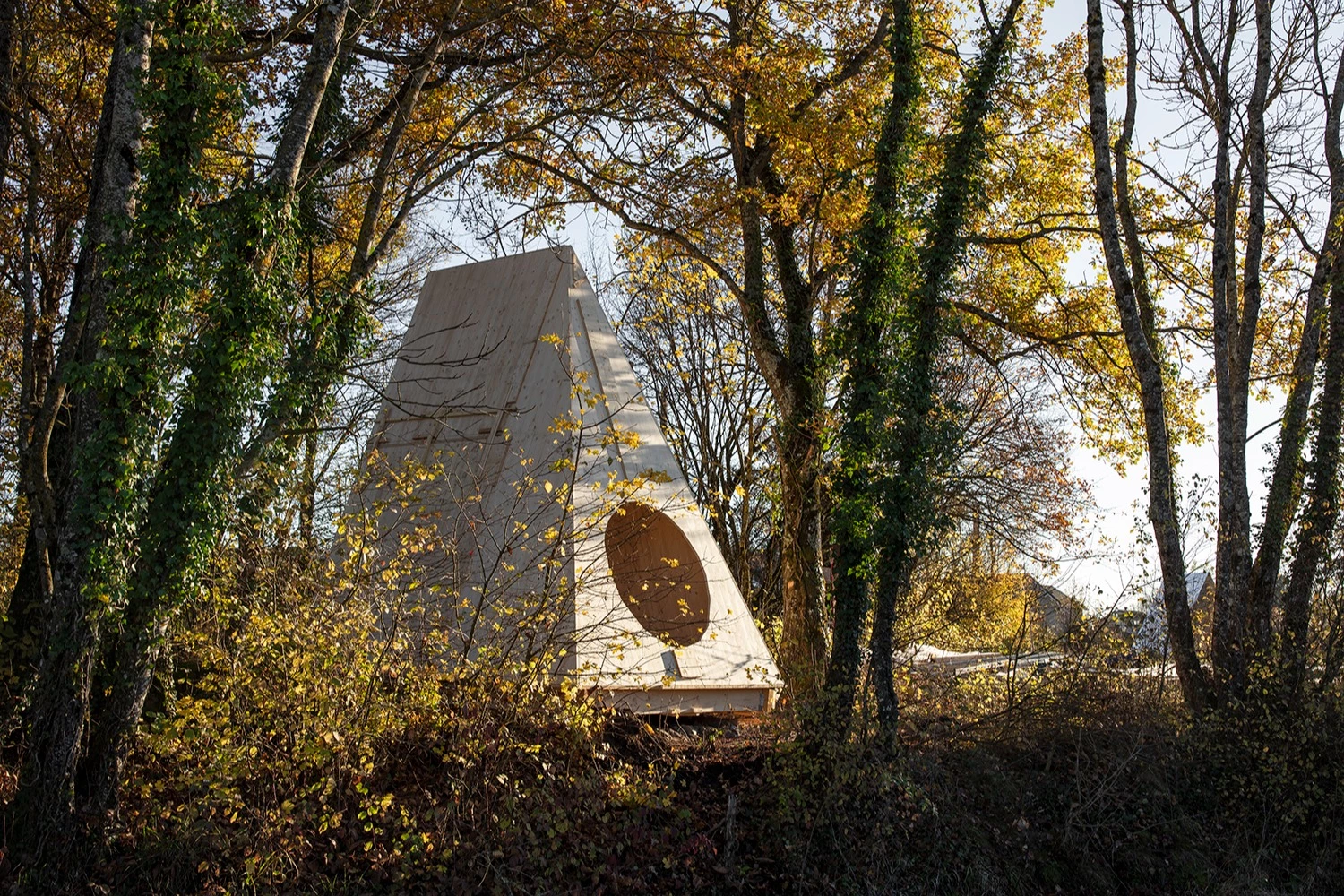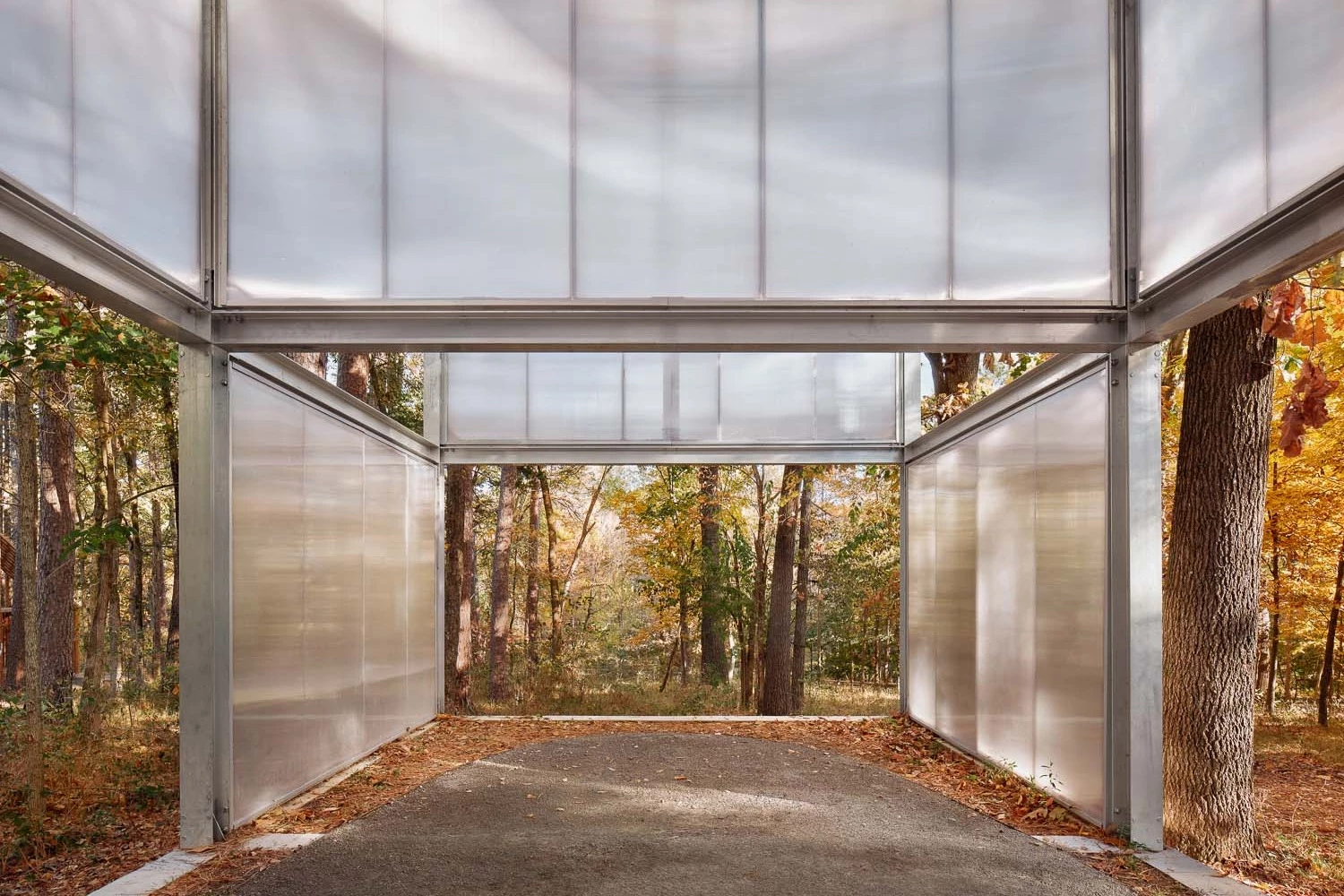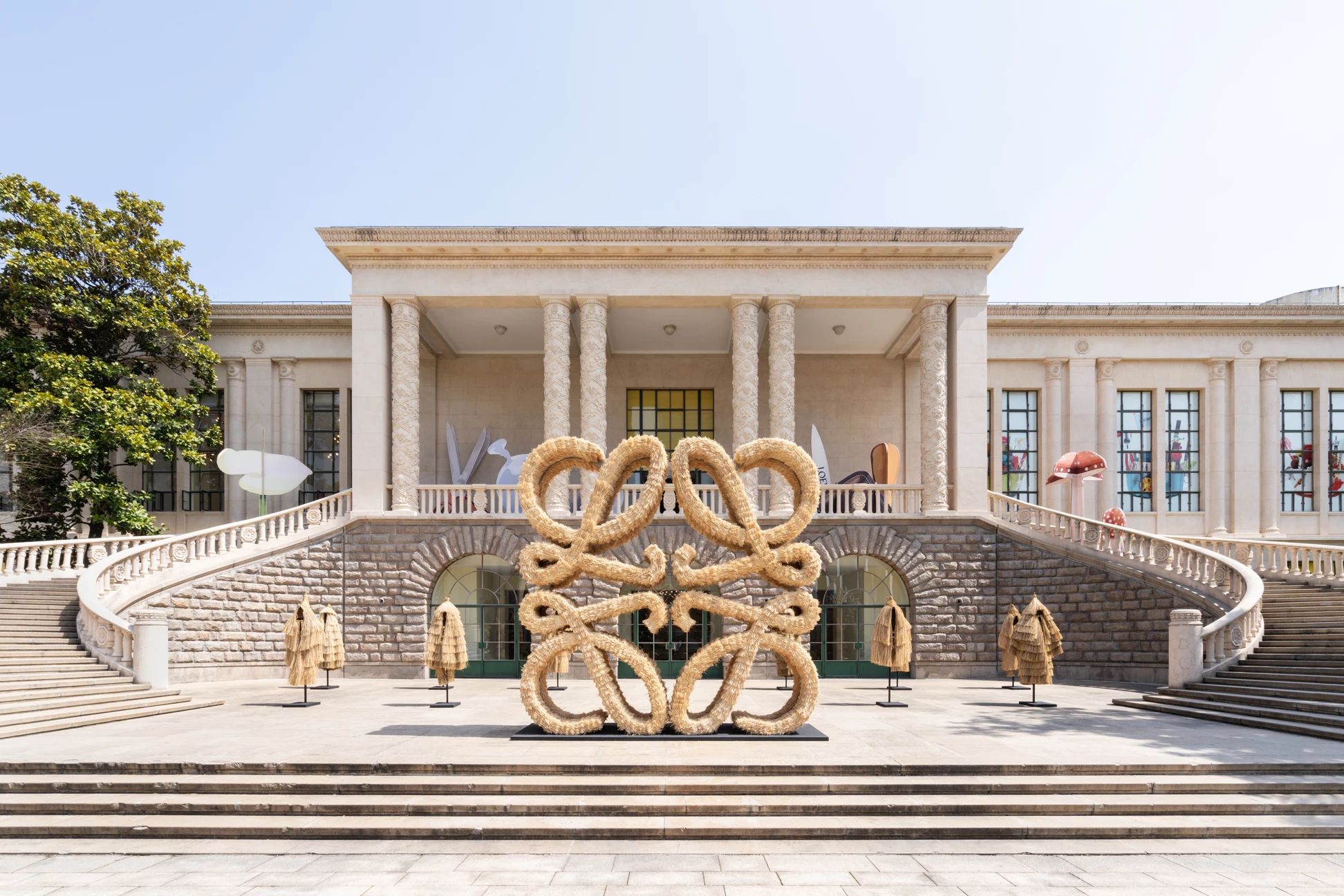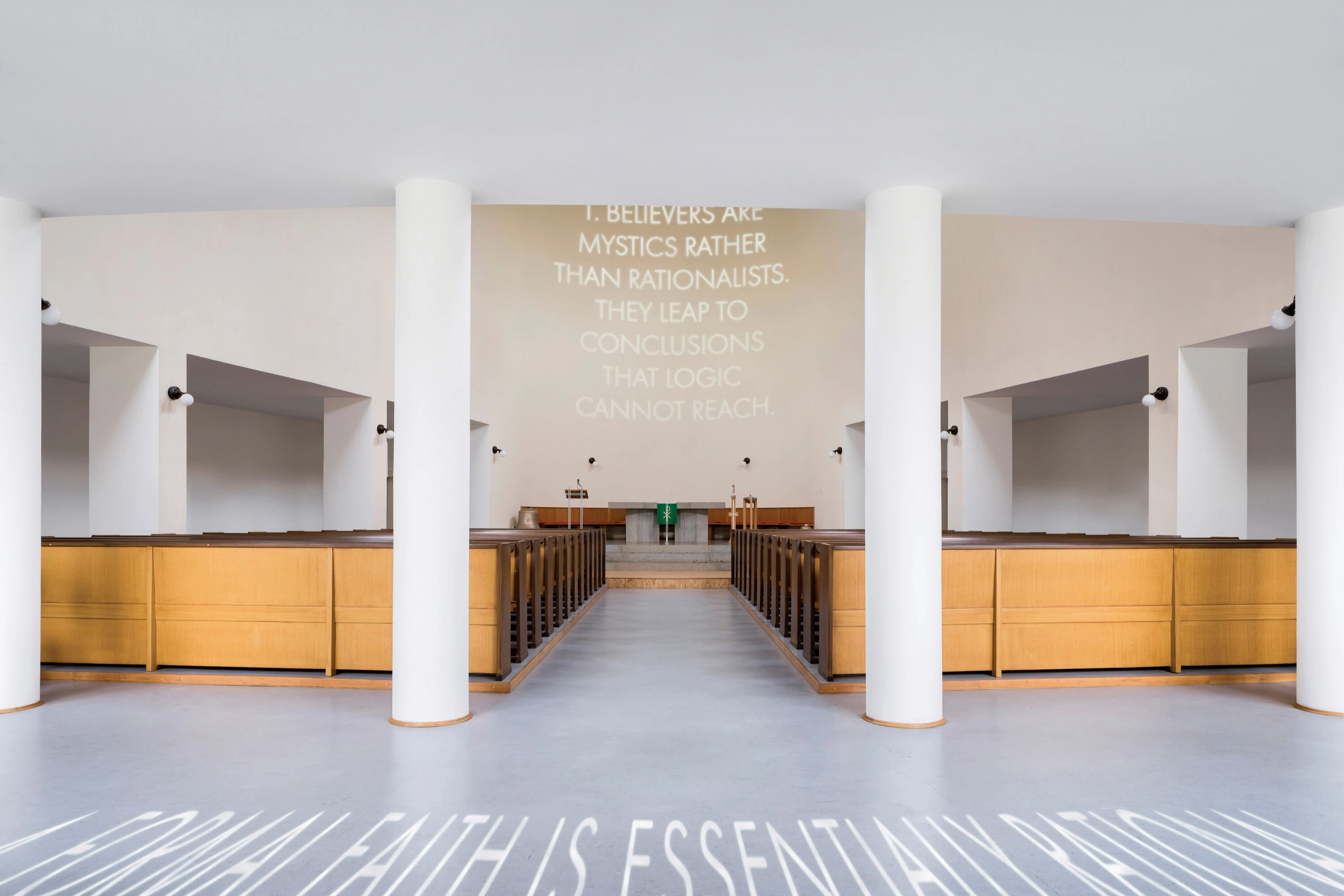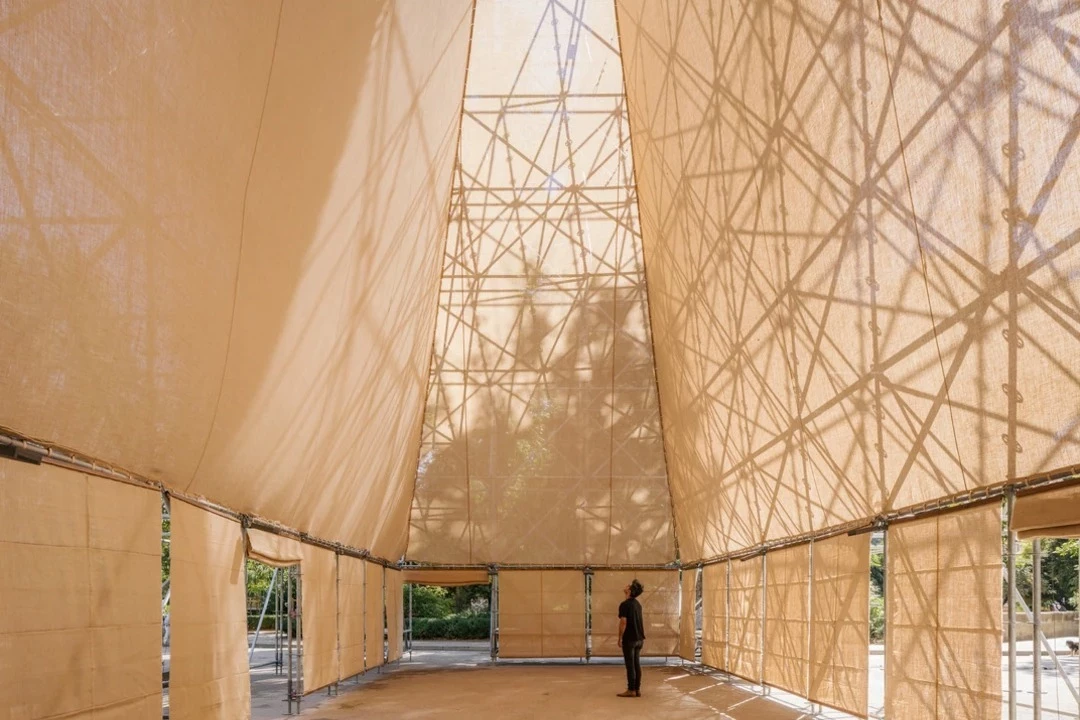中國上海 扭轉塔與螺旋站-海上的生態基礎設施
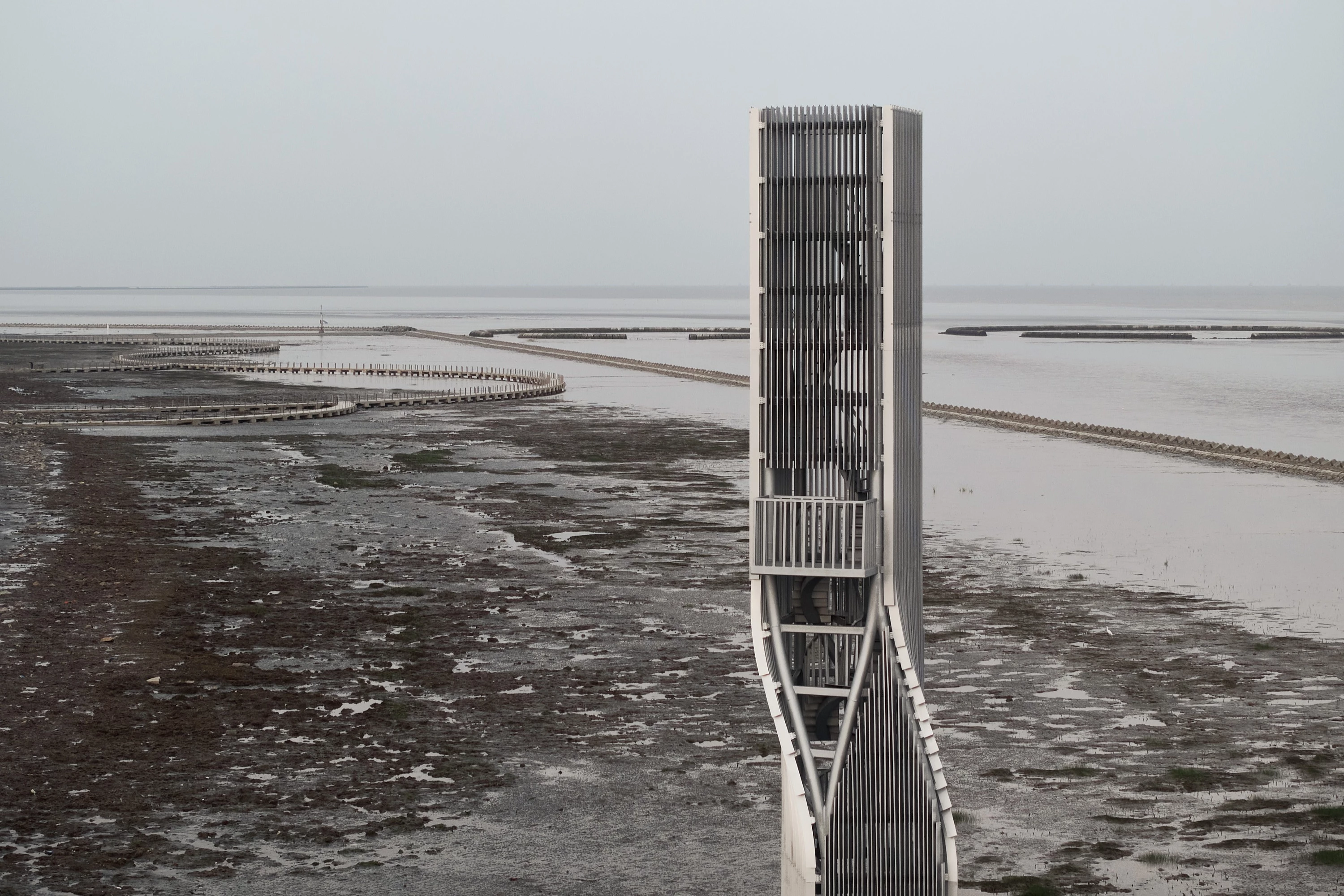
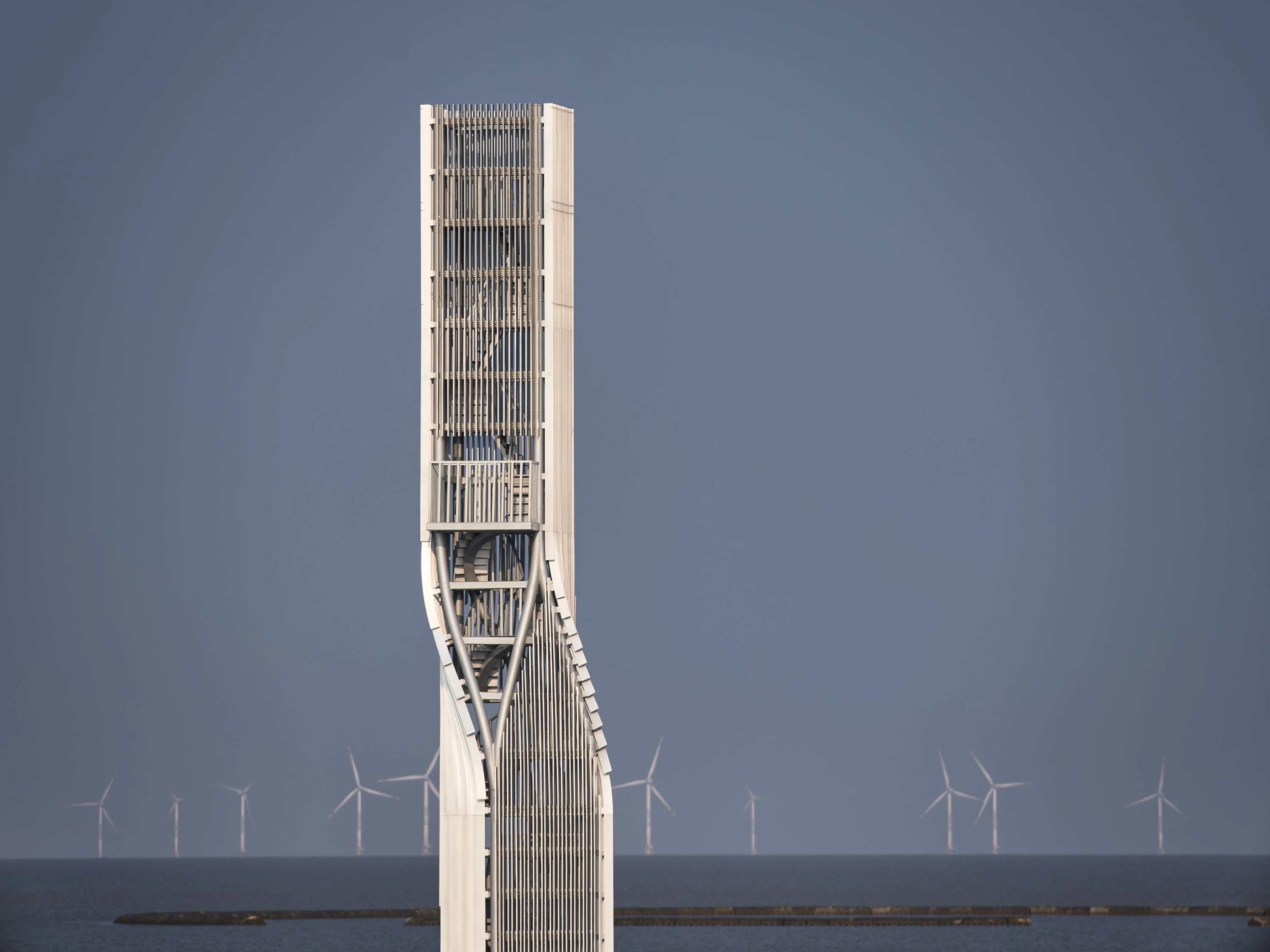
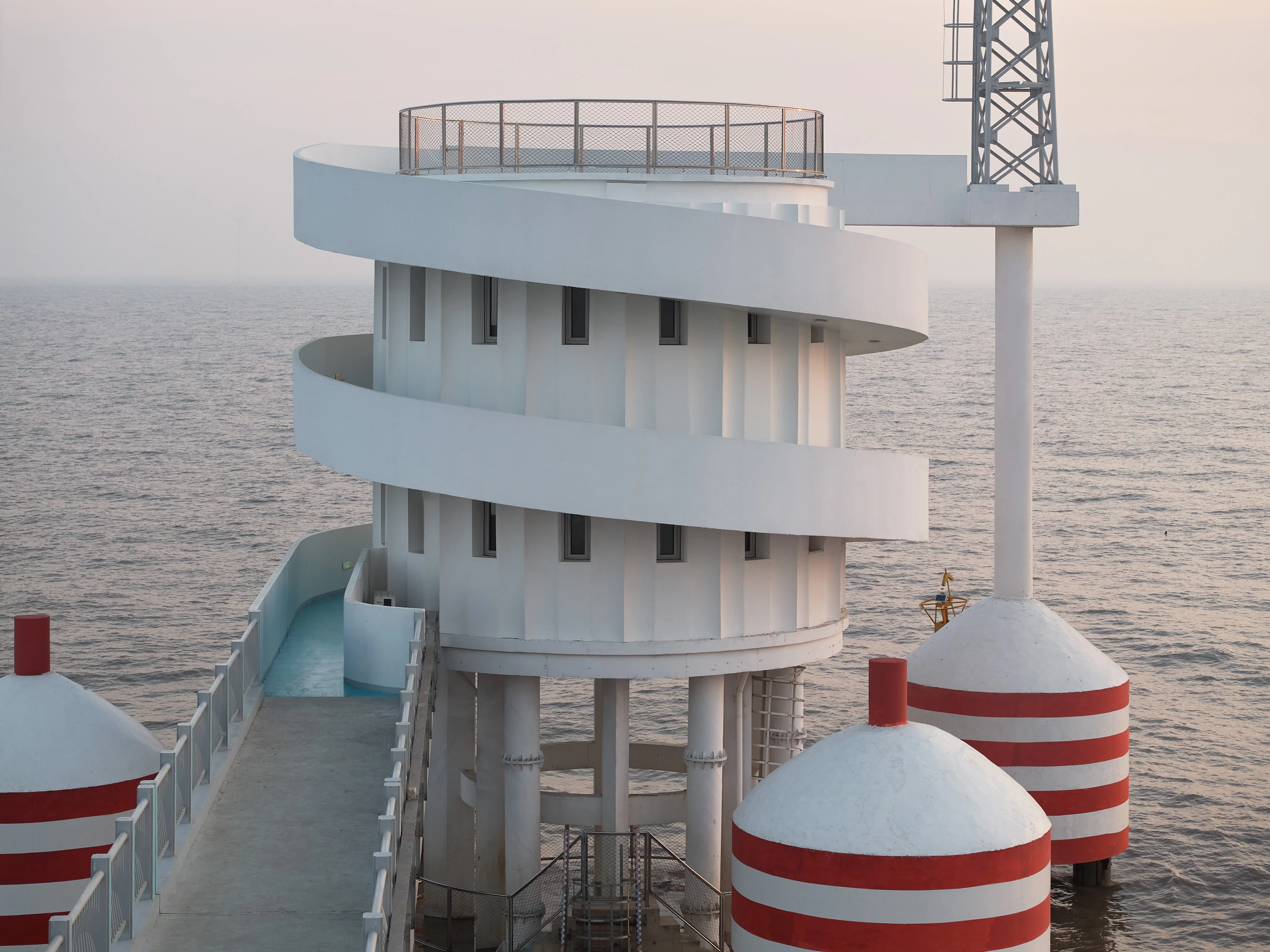
Twisting Tower and Spiral Station are two structures of Shanghai Lingang Ecological Restoration Project, located 10 kilometers apart along the coastline. They demonstrate the possibility of infrastructure as landmark, that not only serve for ecological purpose, but also attract public attention to environmental issue through visual expression of technical elements. From an architectural perspective, they also attempt to explore economic and intriguing solution by taking minimal formal manipulation.
扭轉塔與螺旋站是上海臨港海洋生態保護修復計畫的兩個點位,彼此相隔 10 公里地分佈於岸線。該案展示了基礎設施作為點景建築的可能性:功能性強、非公共的構築物,不僅實現生態環境追蹤監測的目的,更透過技術元素的視覺表達吸引公眾對環境問題的關注,達到廣泛意義上的展示與教育性作用。從建築本體角度來說,其也在試圖探討,在極有限的可操作範圍內,如何用極簡的形式和語彙,尋找符合經濟又不落於單調的結果。
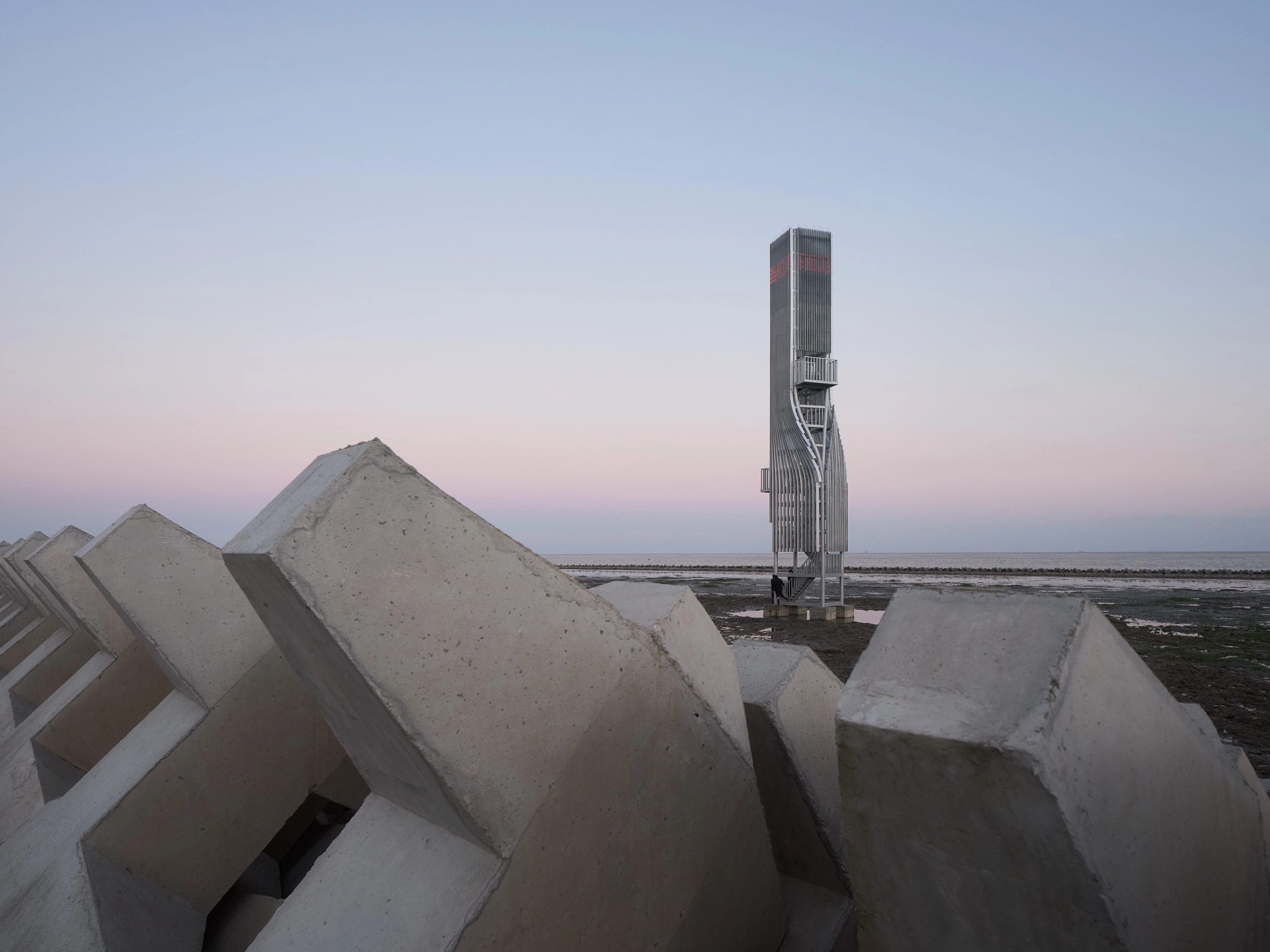
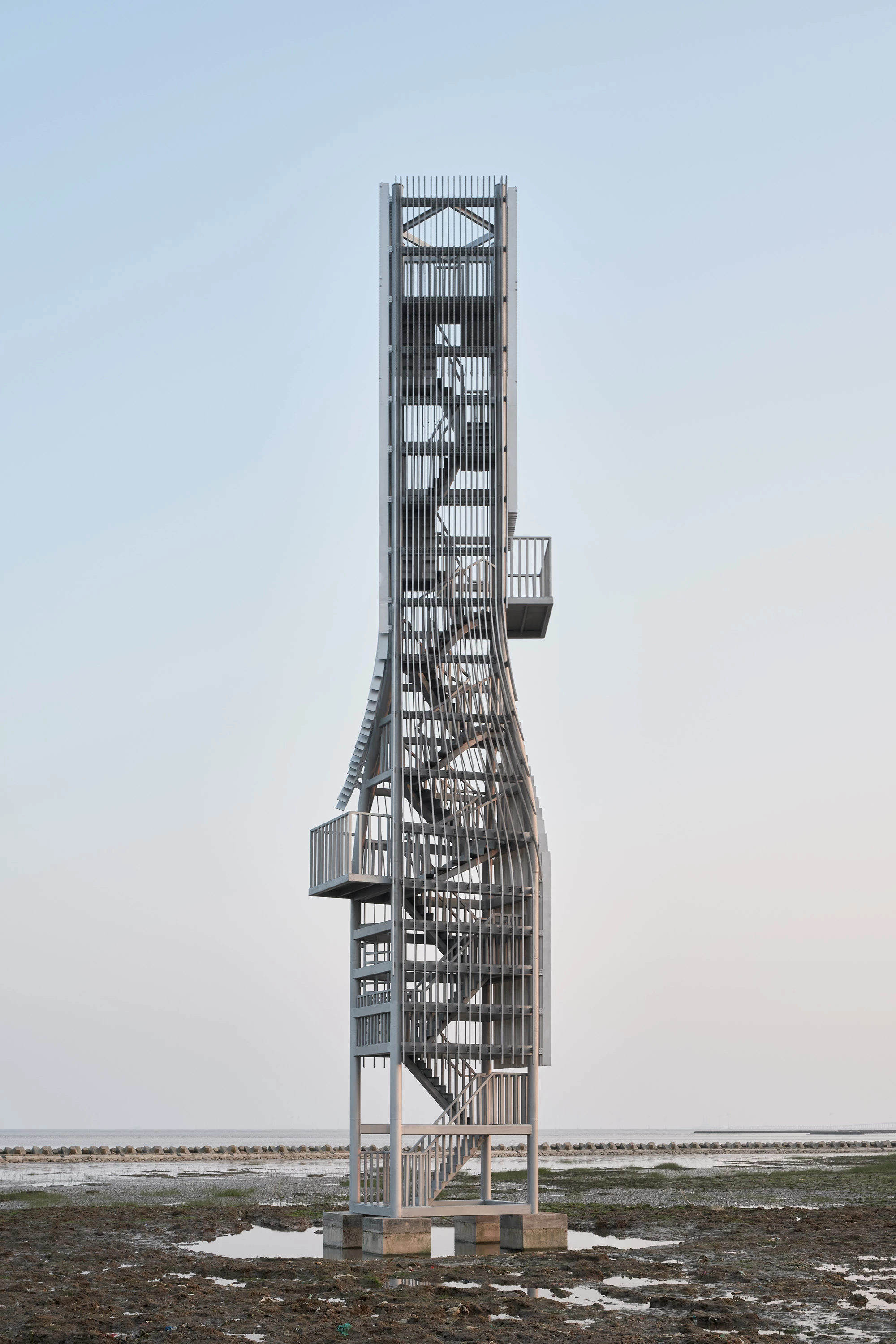
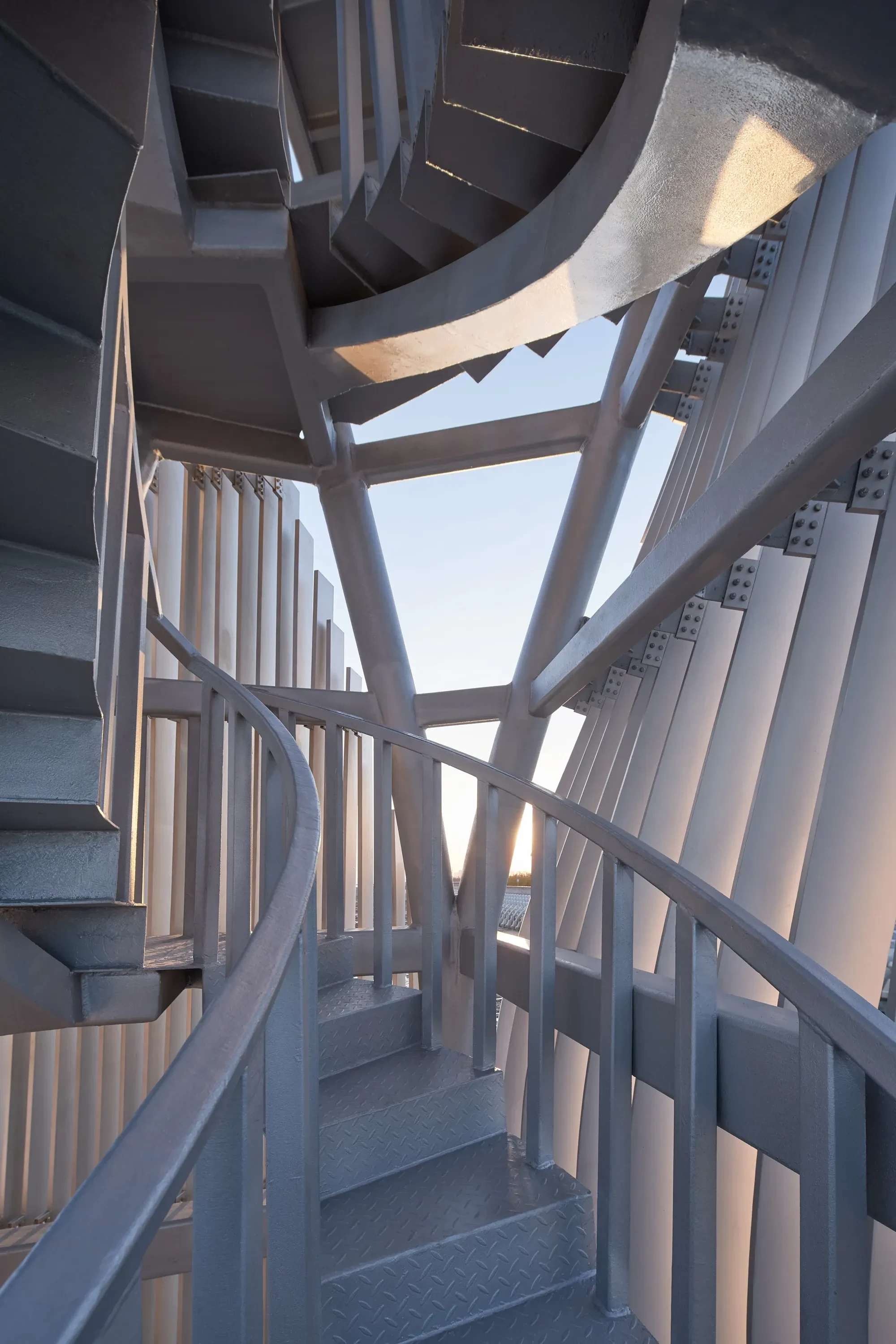
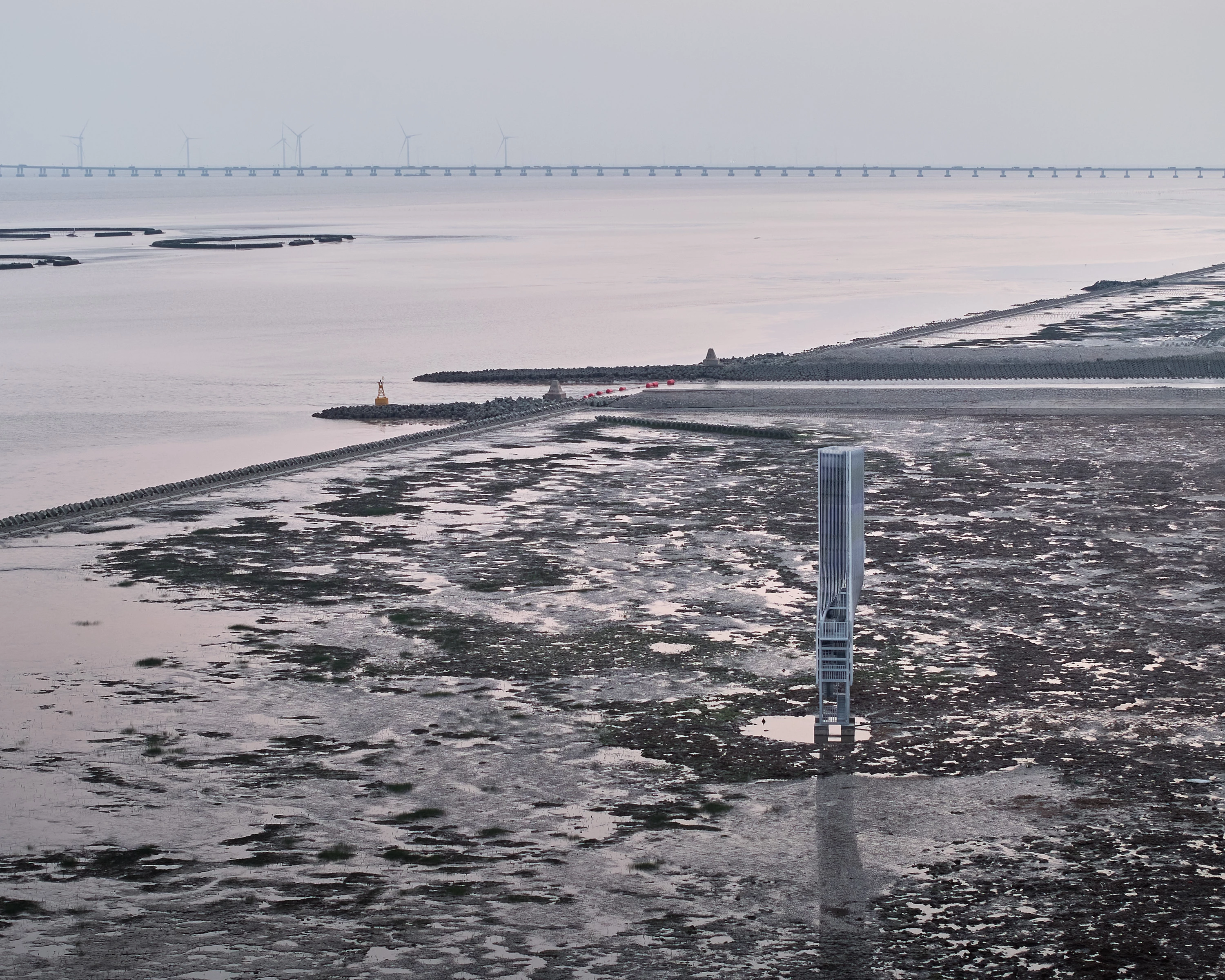
Twisting Tower is an ecological infrastructure that combines two functions: Carbon Flux Monitoring and Sea Level Alert. The former is typically a slender steel tower with multiple platforms at different levels for placing and retrieving monitoring equipment, providing air quality monitoring, climate change observation, bird watching, as well as data collection and storage capabilities. The latter is usually a concrete cylinder that uses top lighting to indicate dynamic ocean tides and issue storm surge warnings. Originally planned as separate structures in two locations, the client decided to combine them into one tower standing 20 meters tall to serve as a landmark within the region.
We incorporated twisting motions at both ends of the tower to imply its dual functionality while facilitating hanging detection devices in different orientations. The main steel structure is enveloped by vertical metal louvers on all sides which create an ambiguous sense of scale when viewed from vast endless coast. Only upon approaching can the internal steel staircase be glimpsed through the louver gaps.
As a 3m x 2m rectangular footprint, the plan reduces to 2m x 2m after being twisted by 25 degrees. 4-meter-height LED light strips are embedded on the top louvers, which are used for sea level alerts. Carbon flux measurement devices are installed on the two platforms below - six meters and twelve meters in height respectively.
扭轉塔是一個碳通量監測和潮位資訊警示兩個功能結合的生態監測基礎設施。
前者通常為細高鋼架方塔,並包含多個標高的平台以放置和取回監測設備,提供空氣監測、氣候變遷及鳥類觀測及資料採集儲存功能。後者則通常為混凝土圓柱,透過頂部照明提示海洋潮汐動態、發布風暴潮警告。原本兩者計畫分開點位建設,而後業主決定將其合而為一高度20米的塔樓,以起到區域範圍內標誌物的作用。
團隊在設計上加入了上下兩端的「扭轉」運動,以暗示其所具備的兩種功能,同時便於在不同方向懸掛探測設備,並以內部的狹長型工作樓梯作為垂直通道。鋼結構主體四周以垂直的金屬百葉窗包裹,從廣闊無邊的海景中,四周沒有尺寸參考物,更顯示出模糊的規模感。只有在走近時,才可透過金屬百葉窗的縫隙,看見時隱時現的內部的鋼構階梯。
塔的起始平面是一個 3x2 平方公尺的矩形,在扭轉了 25 度後,平面縮小為 2x2 平方公尺。塔頂端的的百葉窗內嵌了 4 公尺高的 LED 燈帶,以用於潮位警示。燈帶以下則是碳通量監測區,分別在海平面以上 6 公尺和 12 公尺高的位置,各設有安裝碳通量監測設備的觀測平台。
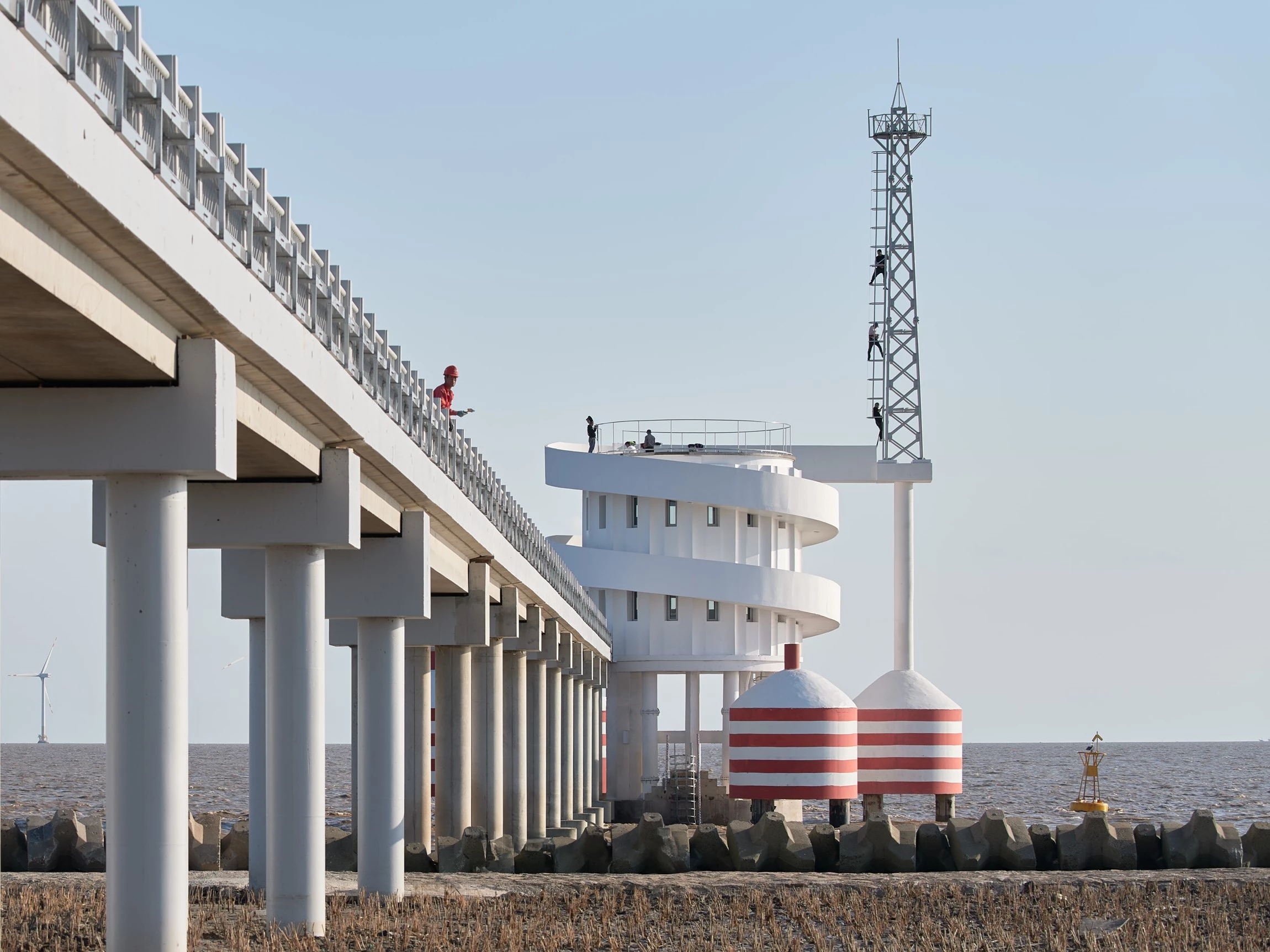
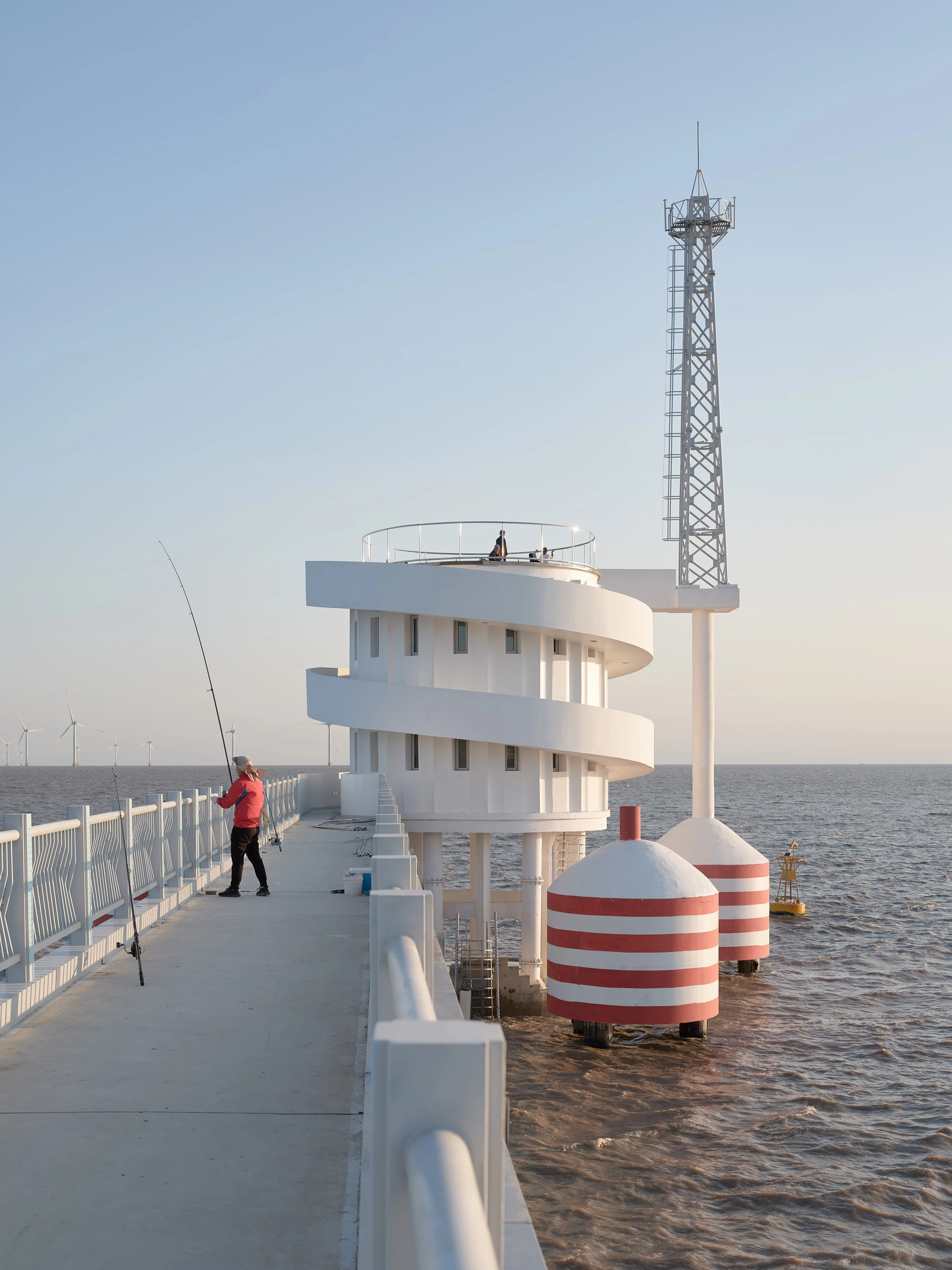
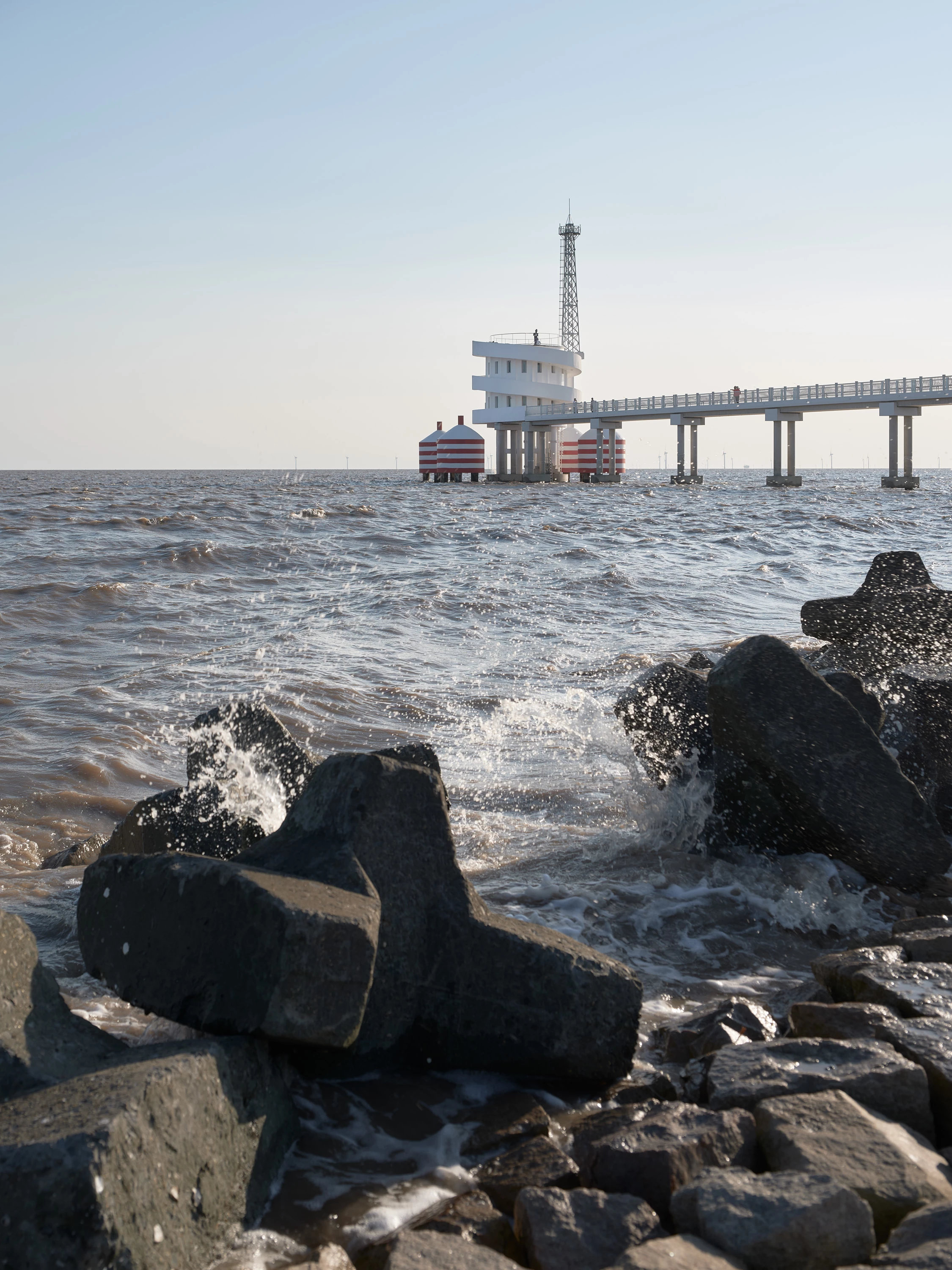
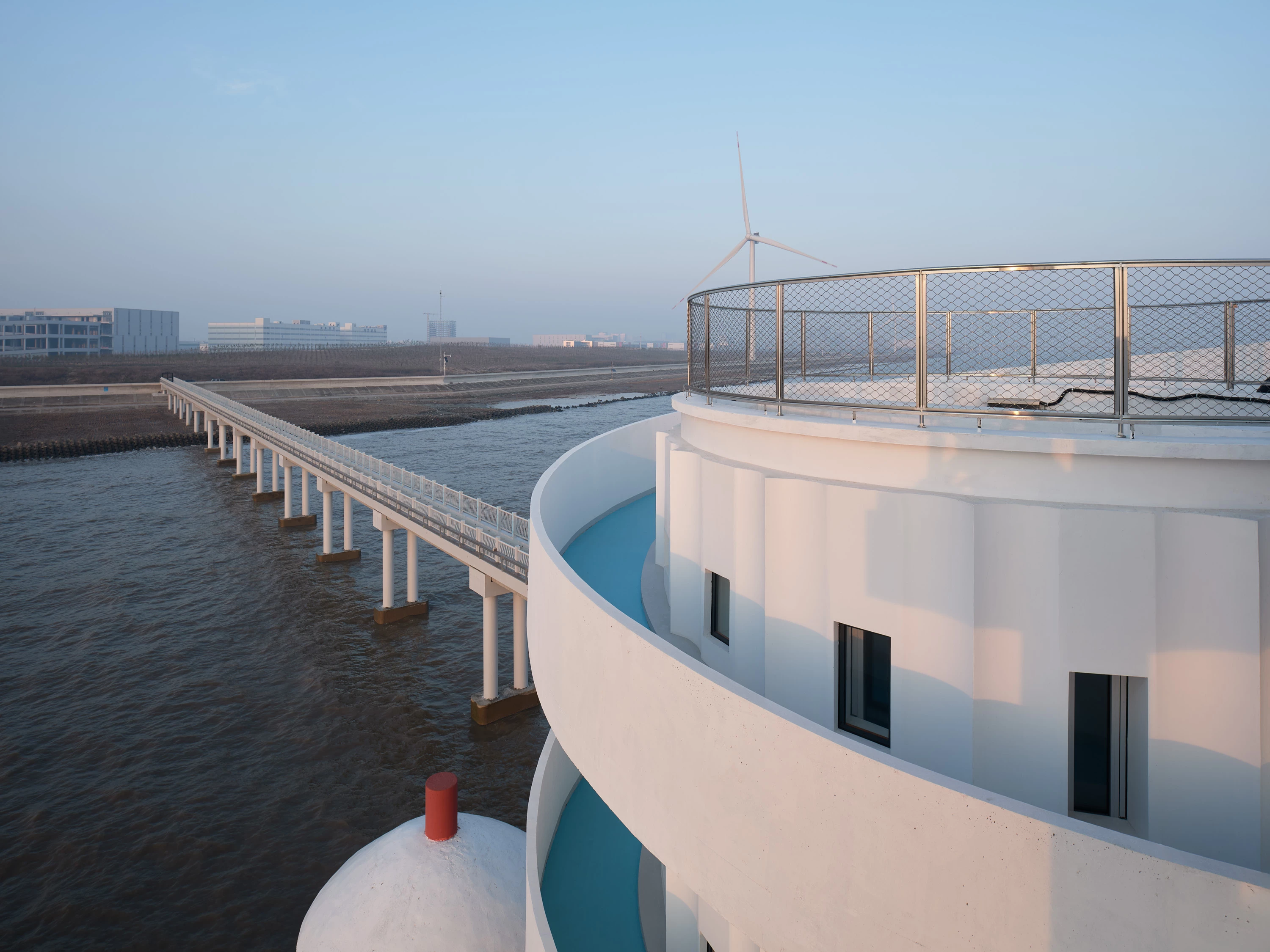
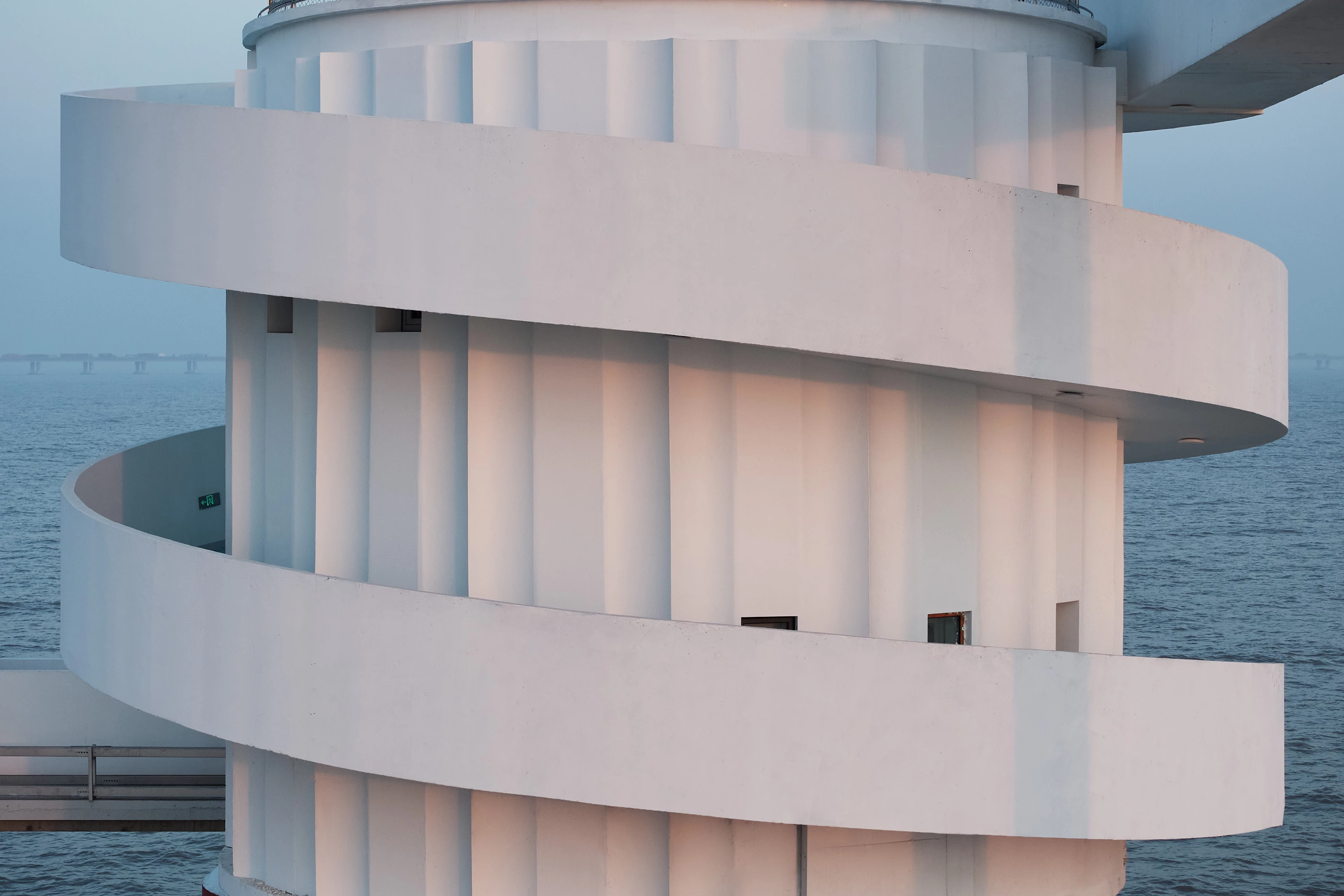
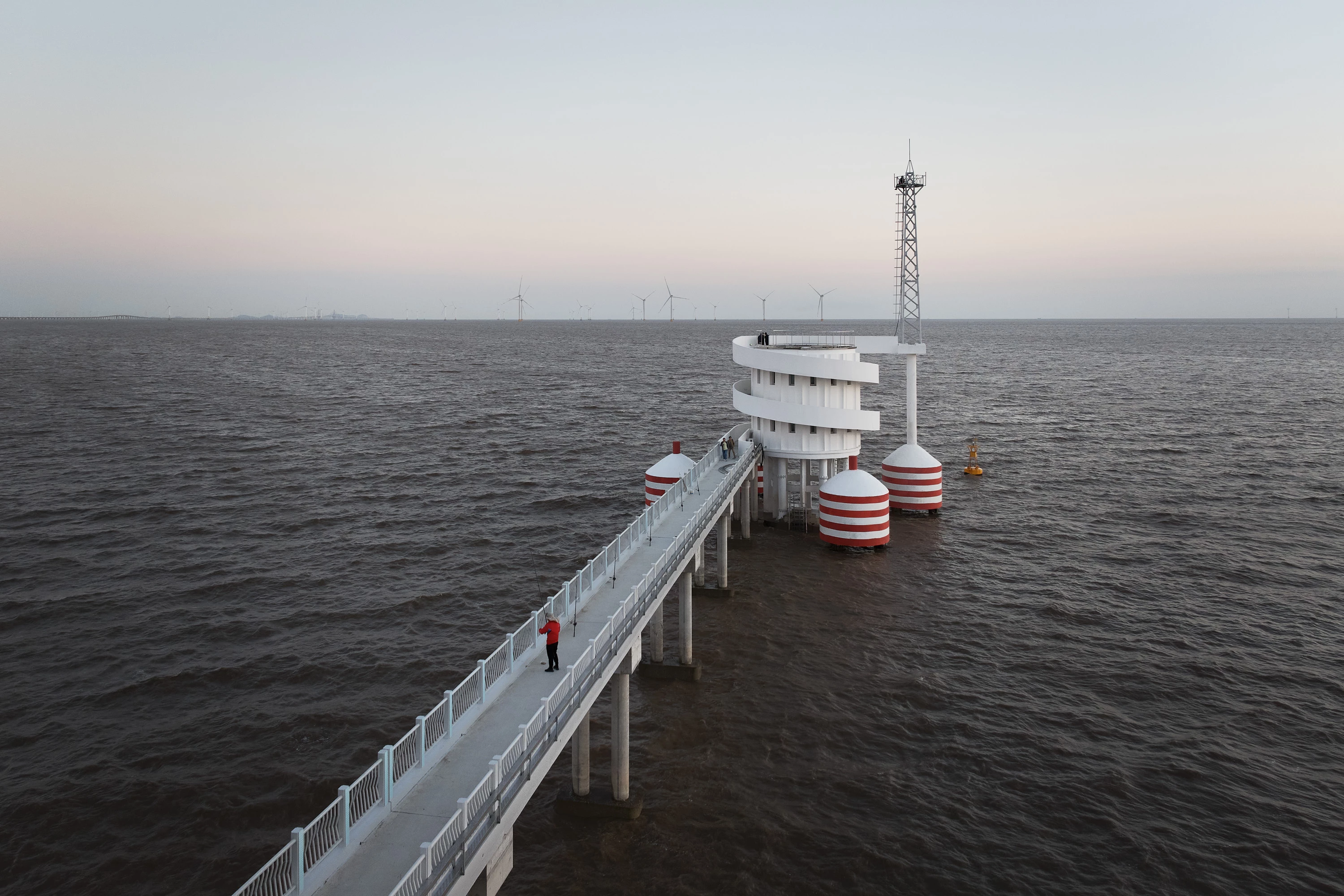
Spiral Station is an offshore ecological monitoring station located 200 meters away from the shore, providing basic monitoring functions for hydrology, meteorology, water quality, etc. Floating alone on the sea, the Spiral Station can only be reached via a 20-span bridge.
According to the brief, the typical dimension of the main station should be within 11 meters by 11 meters. Other affiliated facilities include a bridge, collision protection piles, tidal observation wells, and water sampling holes. The default massing of an offshore monitoring station is a concrete box with stairs connecting all levels and a climate tower stands on top of the roof. Considering its distant location and wind load, the proposal shifts the cubic volume into a cylinder with a spiral gesture, while avoiding any decorative components. An eight-meter diameter circular plan is adopted with vertical circulation wrapping on its periphery. A two-meters wide slope spirals up from ground level all along until reaching the roof level, resembling a winding ribbon. One end connects to land, and the other leads to the climate tower standing on an anti-collision-pile. The station enjoys an open plan with no interruption and easy access onto the rooftop working platform.
螺旋站是一座離岸 200 公尺的近海生態監測站,提供水文、氣象、水質等基本監測功能。此螺旋站僅可介經由長達 20 跨的棧橋到達,彷彿獨自漂浮於海上的太空站。
平台尺寸為 11*11 平方公尺,其主體功能和形態都必須落在此範圍之內。其他設施則包括了棧橋、防撞保護設施、通航警示標誌、潮位觀測井、水質採樣孔等。該案的預設形式為一矩形混凝土盒,並帶有連接各個樓層的室內外樓梯和一位於屋頂頂部的氣候監測塔。由於考慮到其離岸較遠的距離以及海上的風力較大,並且為實現遠觀時的景觀標誌性,團隊選擇將原定的立方體轉變為螺旋圓柱體,並避免使用任何裝飾部件。最後採用直徑 8 公尺的圓形平面,周邊以線性循環包覆,作為 2 公尺寬、從橋面一路盤旋上升至屋頂的長廊。如同一條長長的緞帶一般,一頭連接著棧橋和陸地,另一頭則往空中悠揚,指向立於頂端的氣候塔。全區採開放式設計,
提供廣闊的面海視野以及方便抵達屋頂的作業平台。
Twisting Tower and Spiral Station try to go beyond the basic paradigm of infrastructure by rethinking program and taking minimal gesture, creating dual sculptures on the beach and the sea.
這兩項海上的生態基礎設施,扭轉塔與螺旋站,透過新思考功能的重構,並以最簡的策略,改變了基礎設施的常規形式,成為彷彿豎立於海的盡頭的一對雕塑作品。
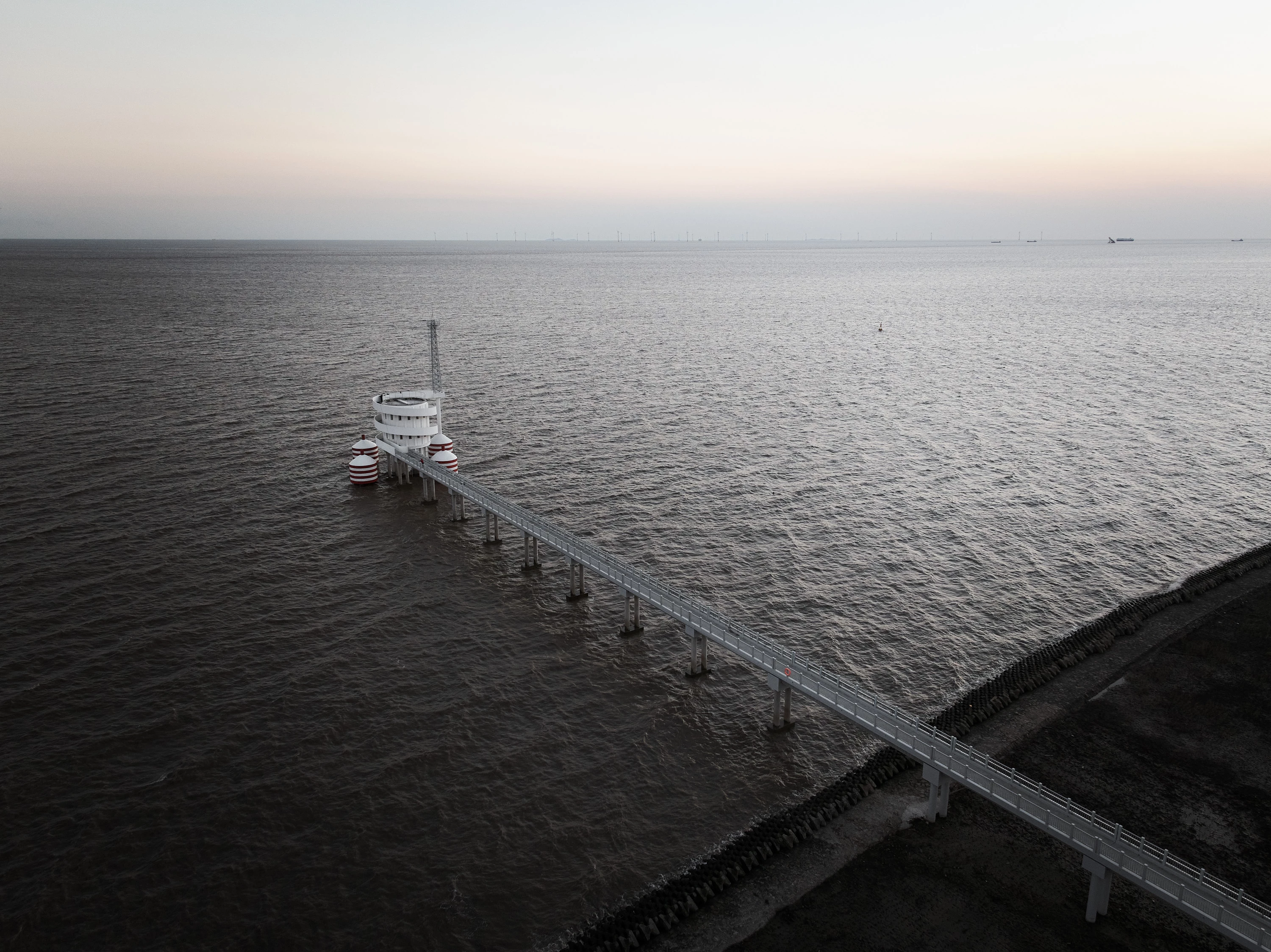
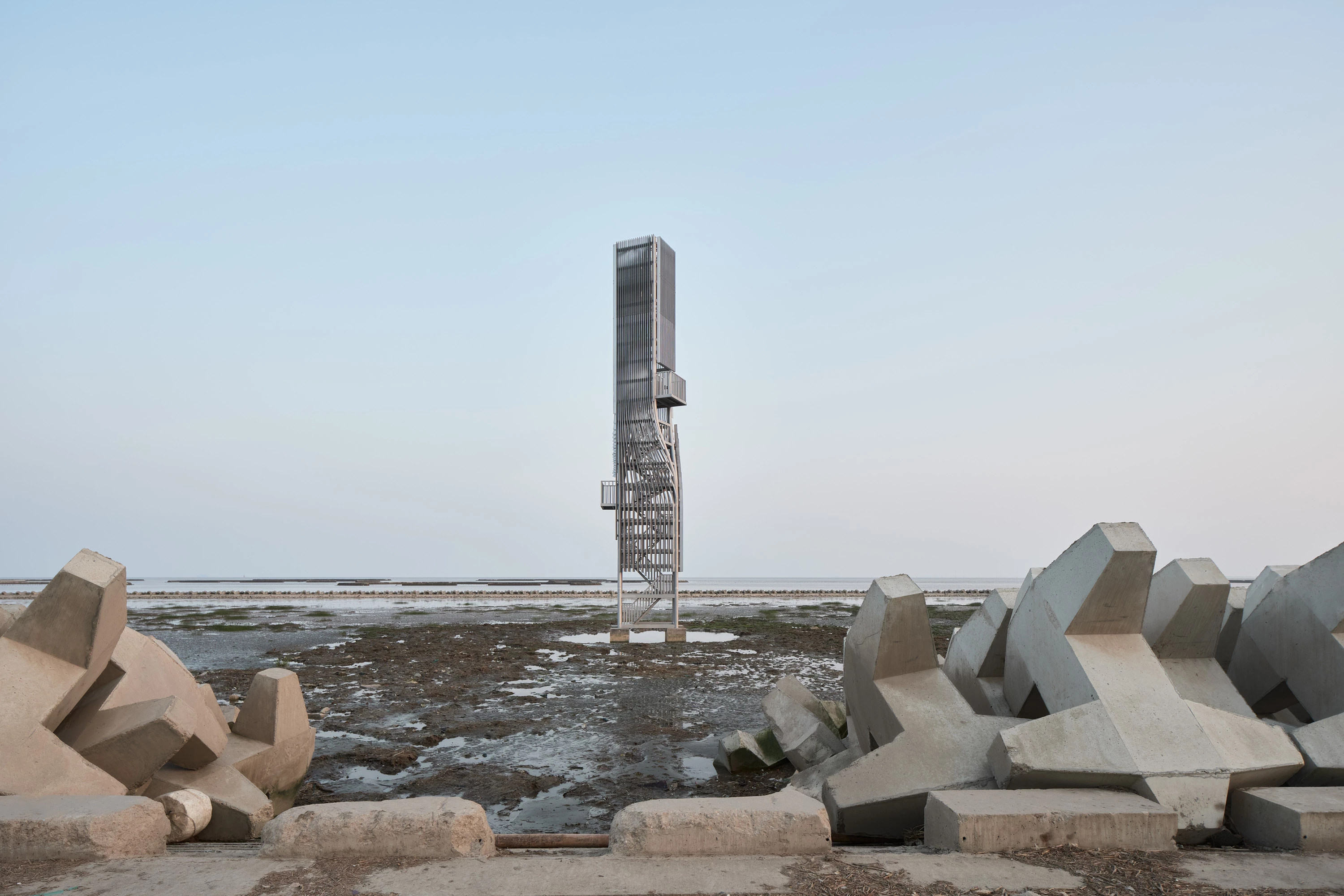
Principal Architects:HCCH Studio
Team Architects:Hao Chen, Chenchen Hu, Yuling Wang, Qi Zheng, Yida Hou
Structural Engineering:Shanghai Youwei Engineering Design Co.,Ltd.
Principal Structure:
Location:Lingang Coast, Shanghai.
Photos:Qingyan Zhu
Text:HCCH Studio
Collector:Ana Wang
主要建築師:HCCH Studio
團隊建築師:陳昊、胡琛琛、王宇玲、鄭琦、侯一達
結構工程:上海友為工程設計有限公司
主要結構:
座落位置:中國上海 臨港17公里海岸帶
影像:朱清言
文字:HCCH Studio
整理:王韻如

